
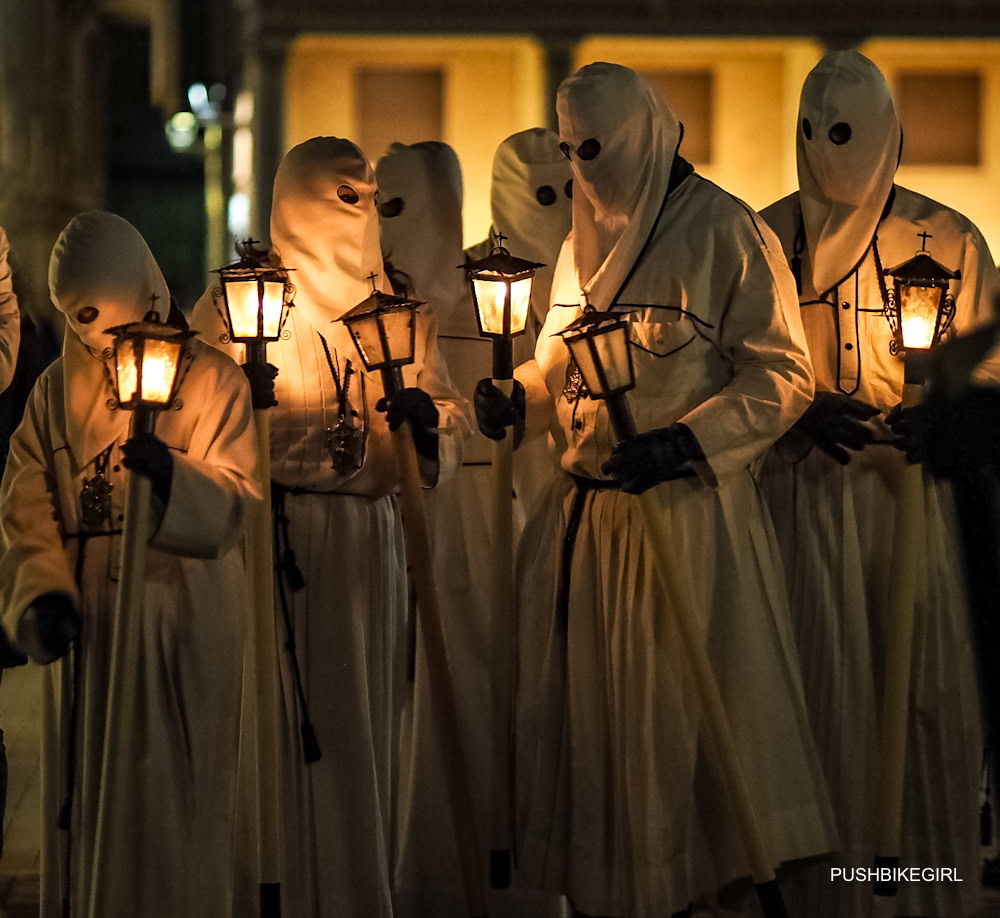
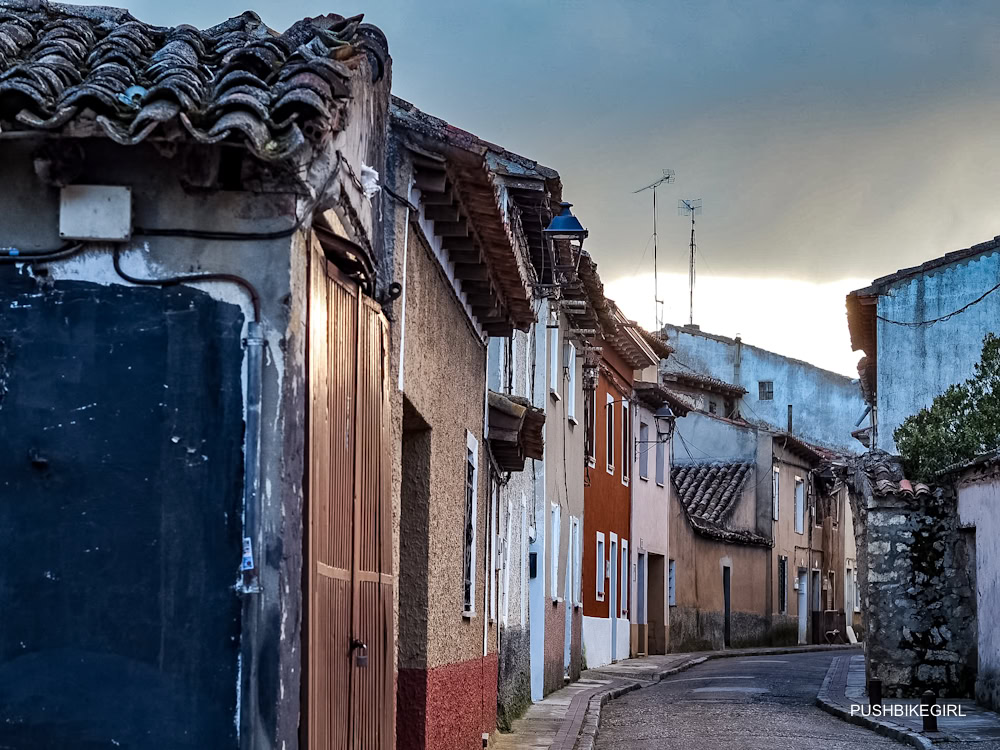
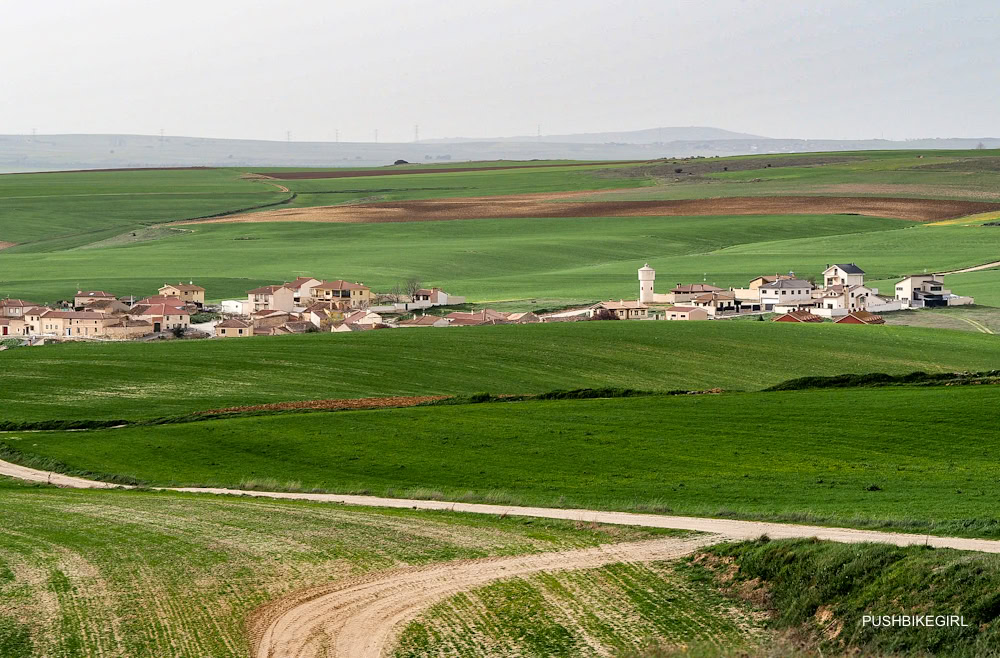
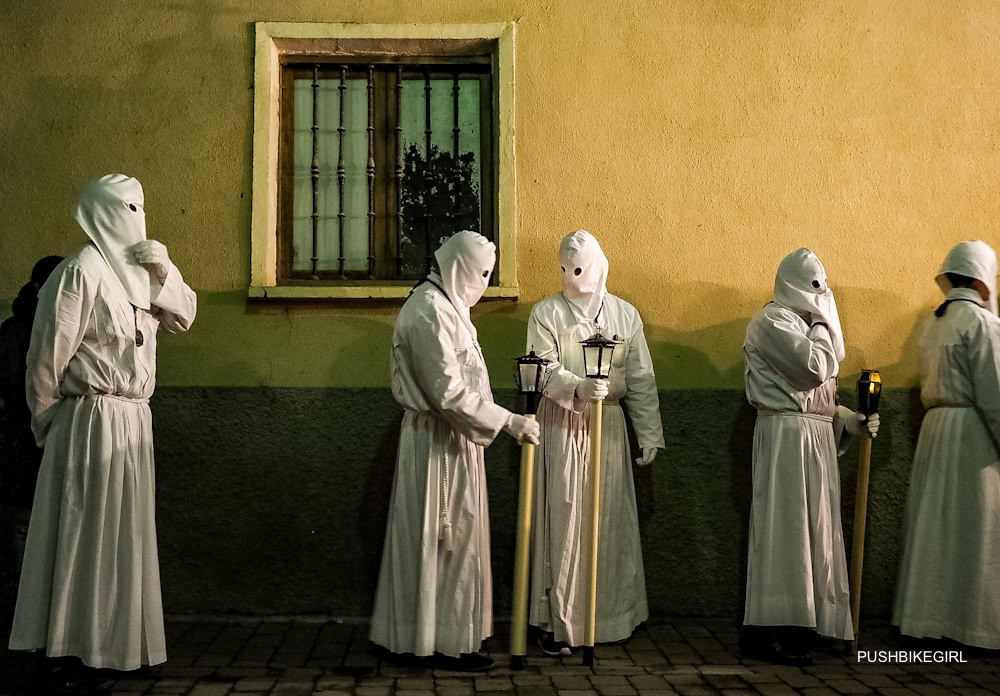
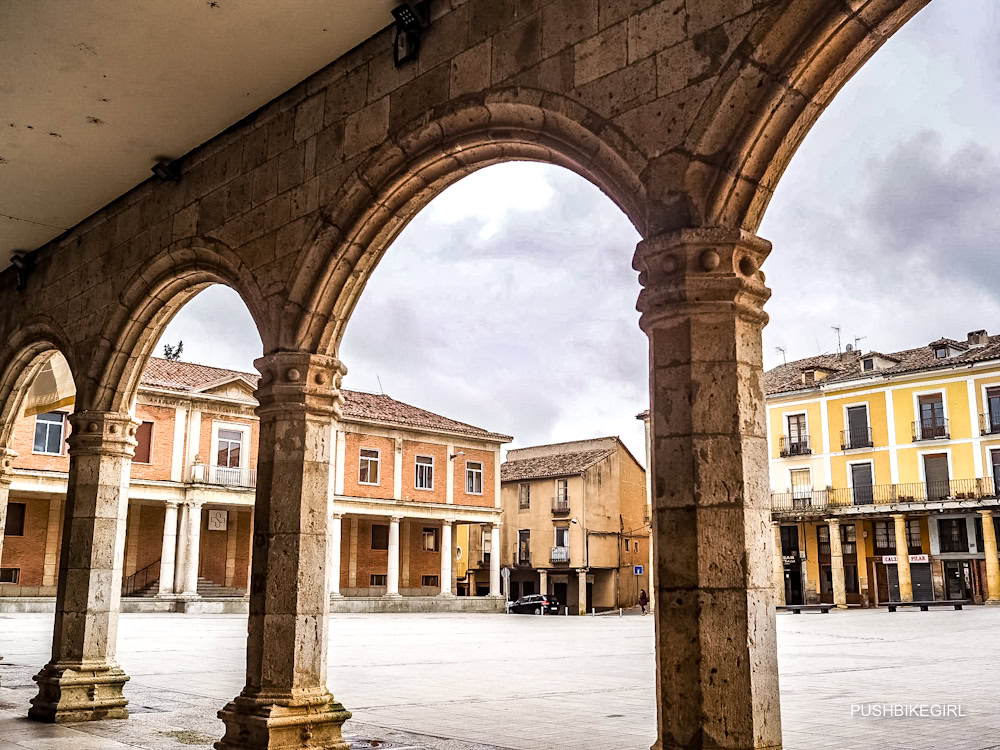
It’s been four years since I was last in Germany, so it was finally time for a visit back home.
However, it’s not that easy with a dog, as the flight from Chile to Europe is unfortunately very long. Ships are not an option because the only ship that takes dogs across the Atlantic is the Queen Mary from New York, but it’s unaffordable for me and too far away.
I had put off the moment long enough, and the fact that Butch would have to go into the baggage hold of a plane had made my stomach ache for weeks. But that fact was unavoidable, and it was time.
The Tuk Tuk is in Talca/Chile, and Pancho, a Chilean friend, is trying to sell it for me there.
I had thought about how to get home for a visit for a long time. Could I find somewhere suitable for Butch to stay, go home and then come back after a few weeks and continue our journey?
No, I concluded that neither of us would be happy – we would stay together.
Only a direct flight was an option because of Butch, and in the end, Madrid was the only choice we had.
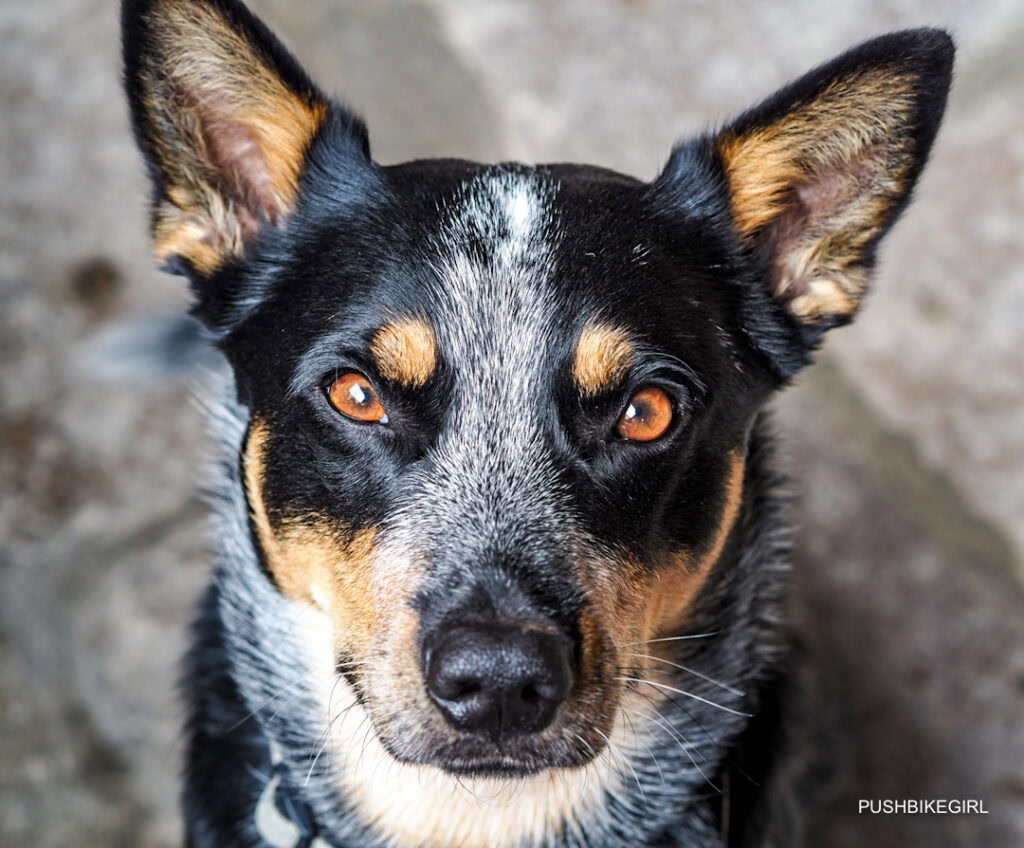
I got Butch an airline box, which turned out to be more complicated than I had thought. I trained him to accept the kennel, got all the necessary papers for leaving Chile and entering Europe, and handed Butch over to the Latam staff two hours before departure, trying to hide my concerns from him.
Although I was annoyed by all the Chilean rules, I hoped that nothing would happen to my boy with all the regulations at a Chilean airline and airport.
Luckily, he didn’t make a fuss and remained reasonably calm when security secured the door on the box while I tried to control my tears at the sight.
On the plane, I asked once again whether the heating was on in the luggage compartment, which I knew was specially partitioned off for animals, and whether Butch was really on board. Then, nothing was left to do but cross my fingers and hope.
Nineteen long hours later, we were happily playing together on the floor of Madrid airport, thrilled to be together again. Butch had his zoomies, and I was just relieved and delighted that everything went well.
Our reunion must have been impressive because a passerby even clapped and was visibly happy for us.
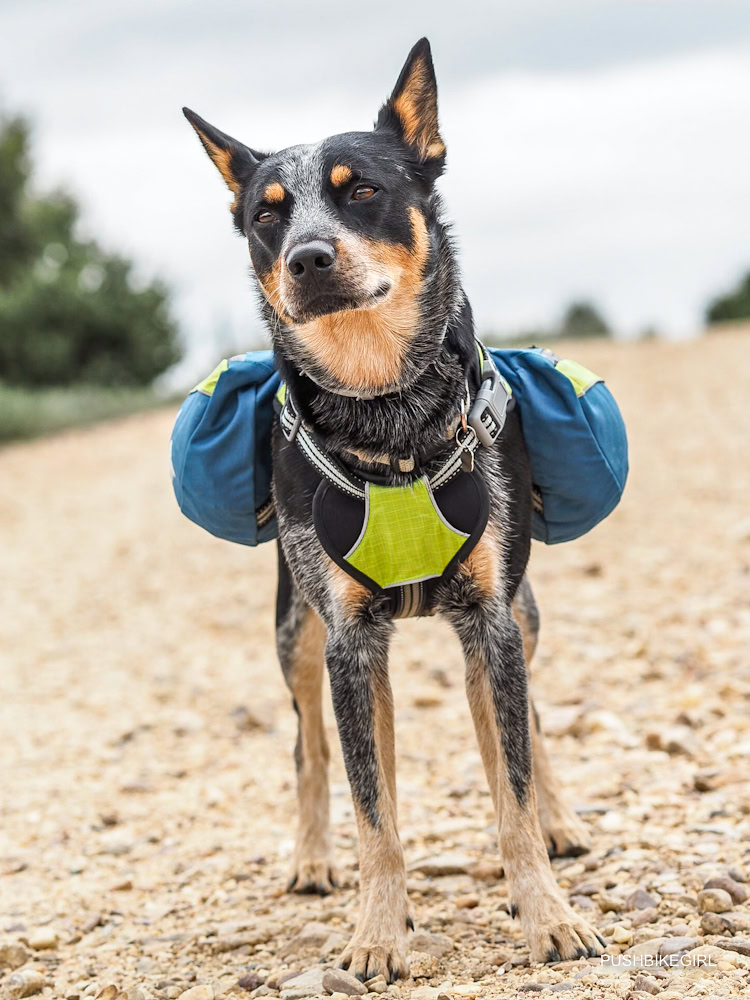
Madrid was of little interest to me. For us, it was just the starting point of a long hike home.
I longed for nothing more than to move. Despite my hand injury still hurting and my foot aching in places, I was determined to regain my fitness.
I felt unfit and couldn’t stand myself as I was. I wanted to rebuild the muscles I had lost while driving the Tuk Tuk for many months. Without the noise of engines or roads, I would move forward now under my own steam. The aim is to arrive home fit.
Hopefully, this time, it will be without any nasty dog encounters.
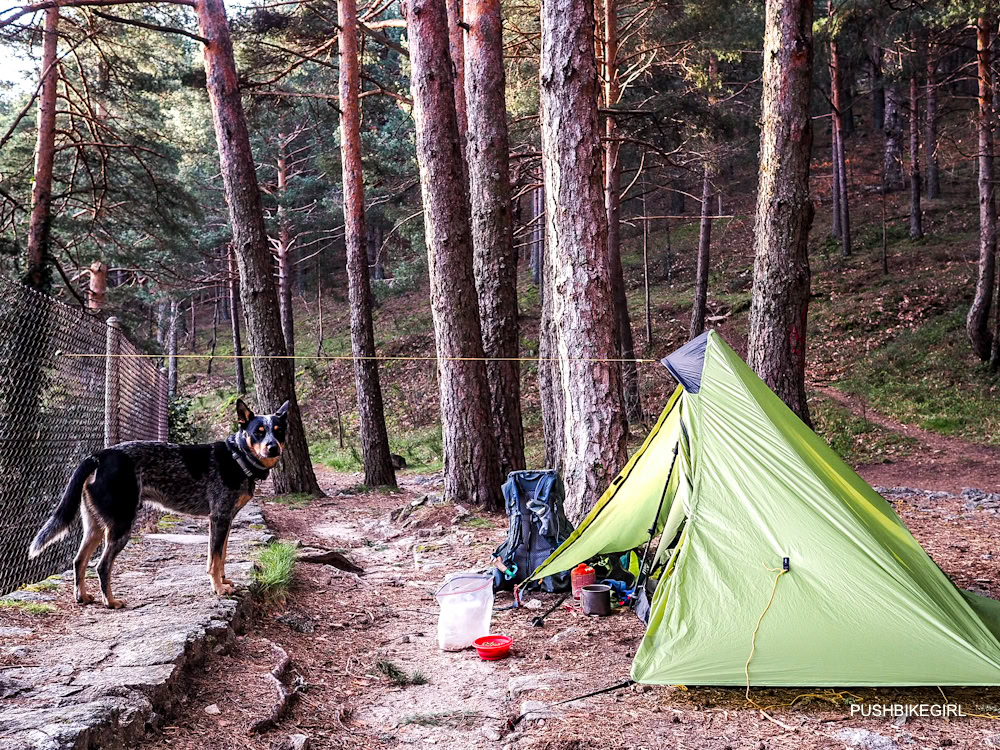
I put together the required equipment, gave away what I no longer needed to homeless people, and sent the important things we couldn’t carry to Ingrid, a former ZDF colleague who has lived in Barcelona for many years and helped me prepare.
Thank you, Ingrid.
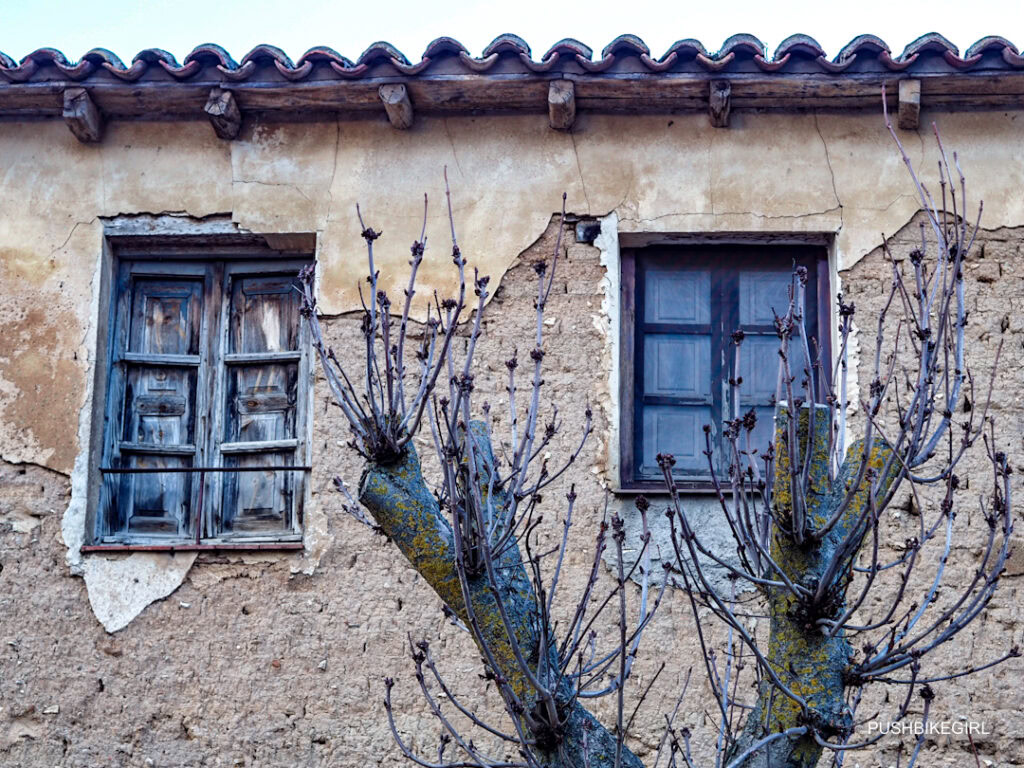
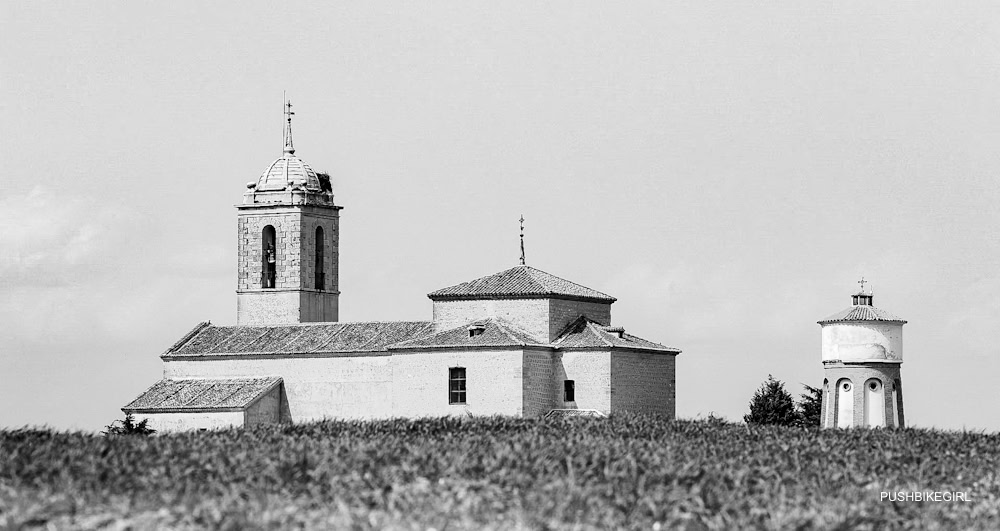
We went to the vet to get the EU pet passport, which is compulsory in Europe, and to be on the safe side, I had Butch vaccinated against leishmaniasis, which is a hazardous disease for dogs in the Mediterranean region transmitted by the sandfly.
I found a hiking trail I was particularly interested in, the GR1, which starts in the Picos de Europa, in the north of Spain, and winds 1250 km from there towards Barcelona through the mountains to the Mediterranean.
As we still had to warm up and I wasn’t sure whether my foot would be able to cope with the strain, I looked for an easy connecting path that would take us from Madrid to the GR1.
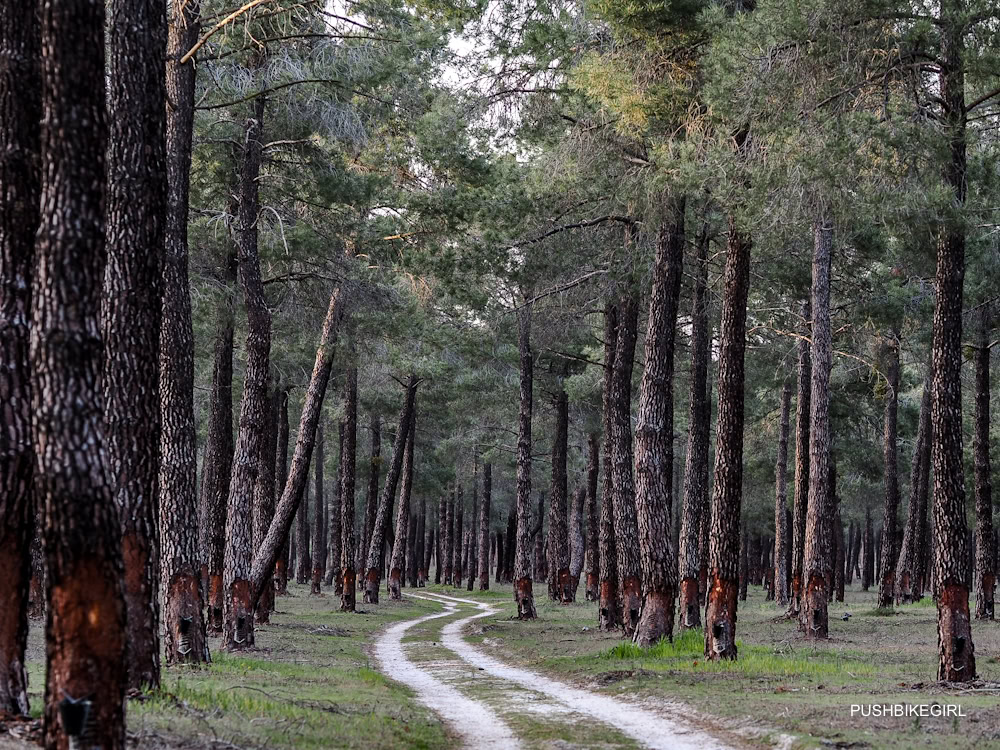
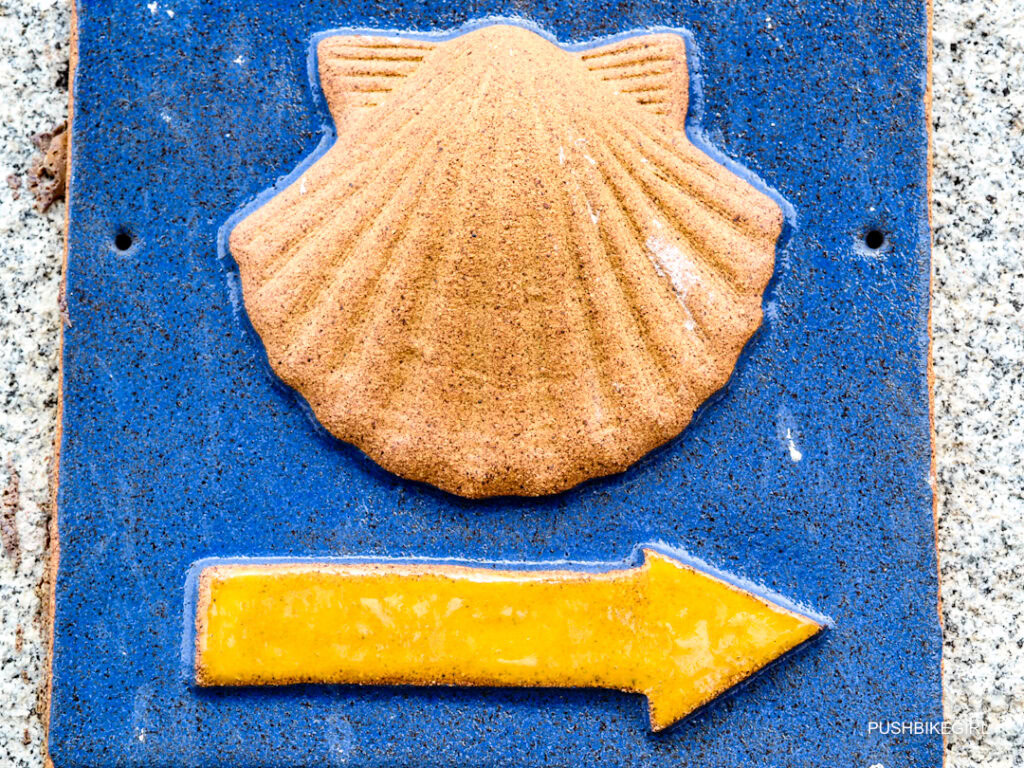



To my surprise, I discovered a Camino, or Way of St. James, from Madrid to the north.
Although I wasn’t so keen on walking a Camino de Santiago initially, my friend Beate Steger, an expert on the Camino de Santiago, assured me that the Camino Madrid has hardly any hikers and is nothing like the overcrowded Camino Frances.
Okay, that’s all I wanted to know. The rest is self-evident, so we set off into a new life the next day without much of a plan.
I’ll be happy when we’re home for Christmas, and we set off mid March 2024 with that thought in mind.
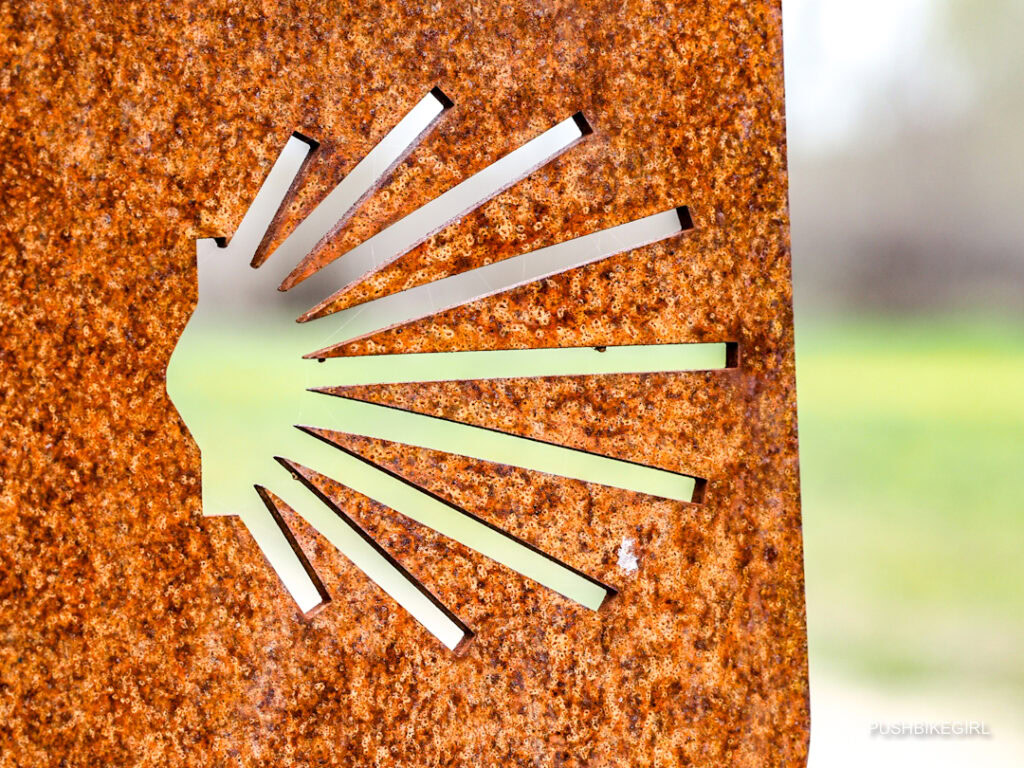
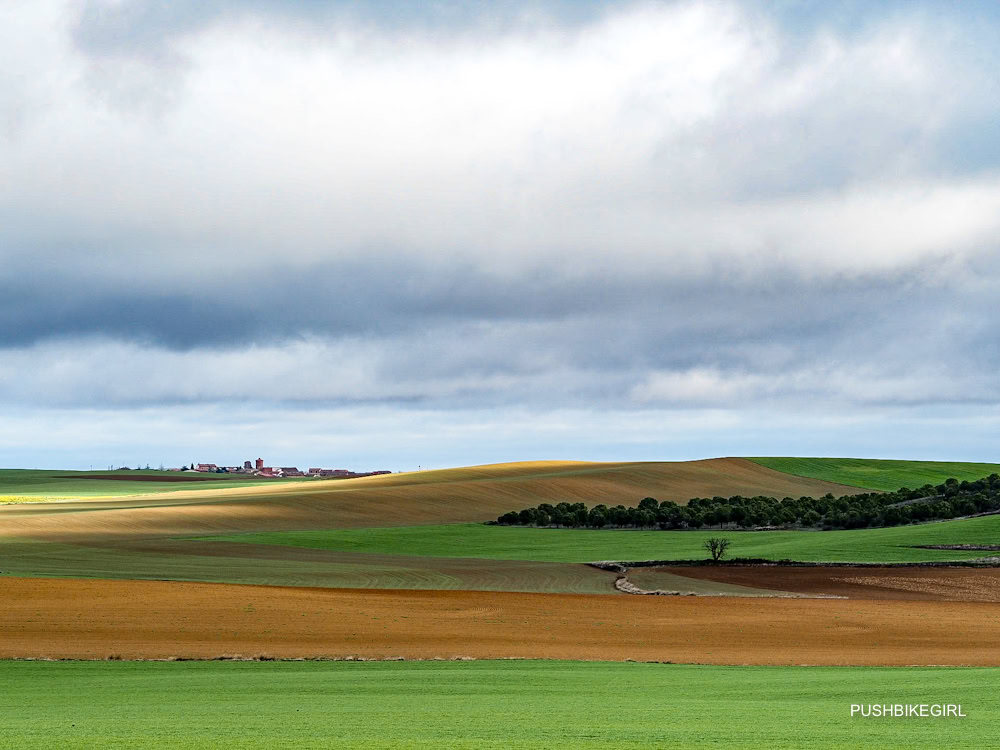
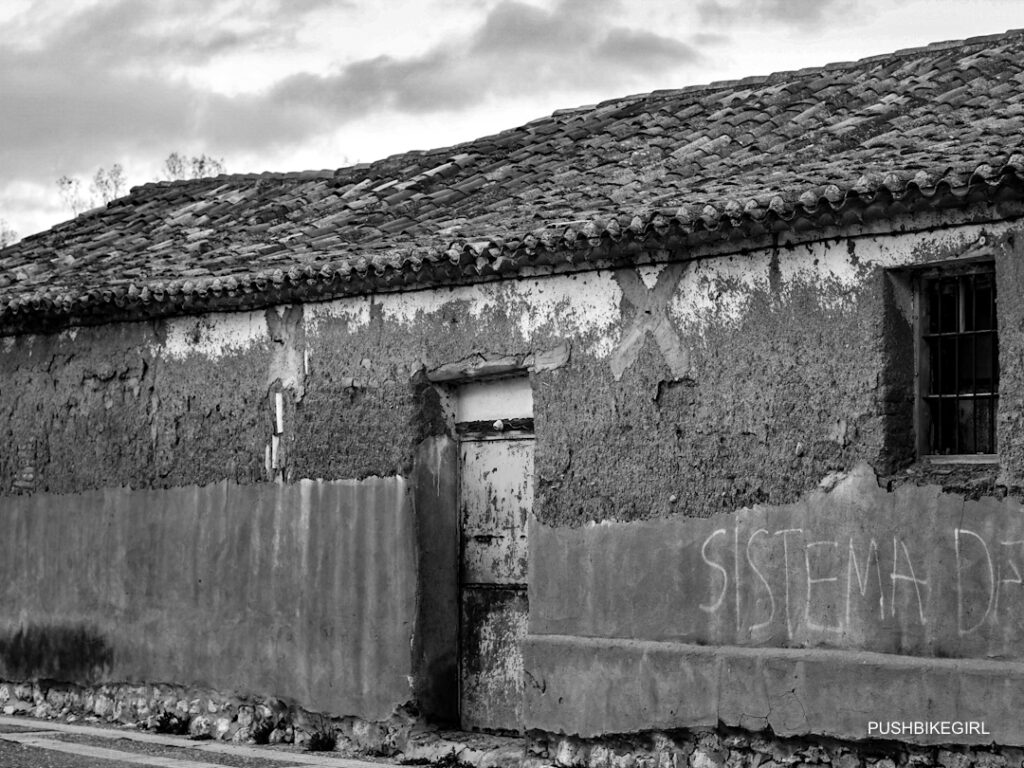
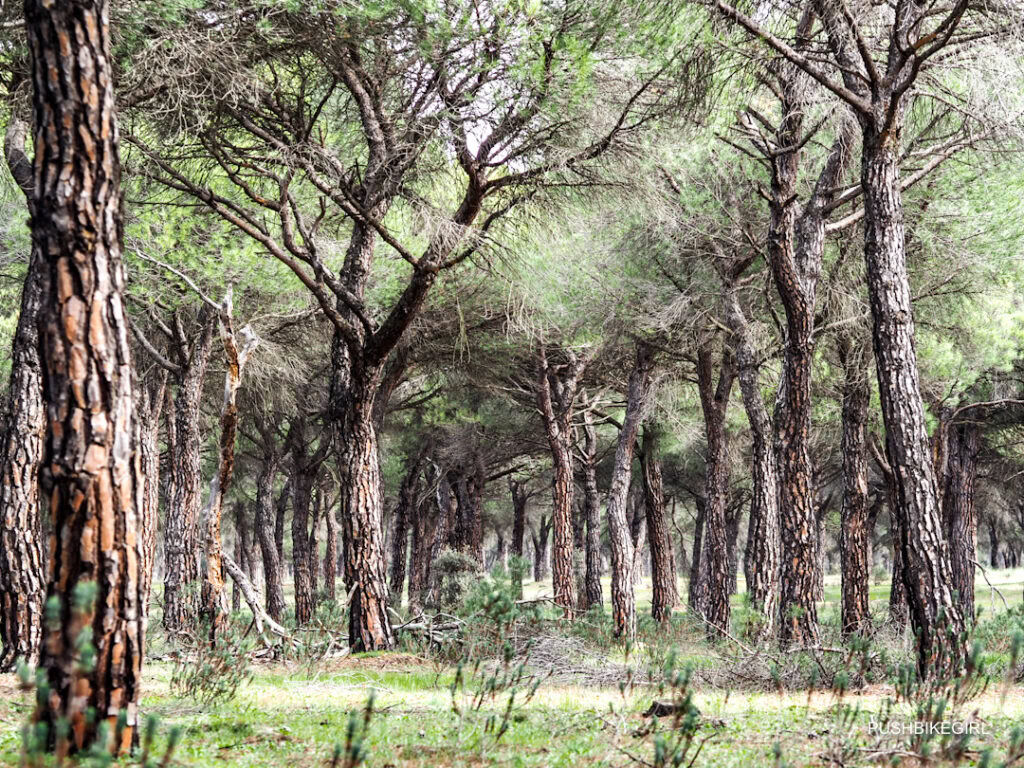
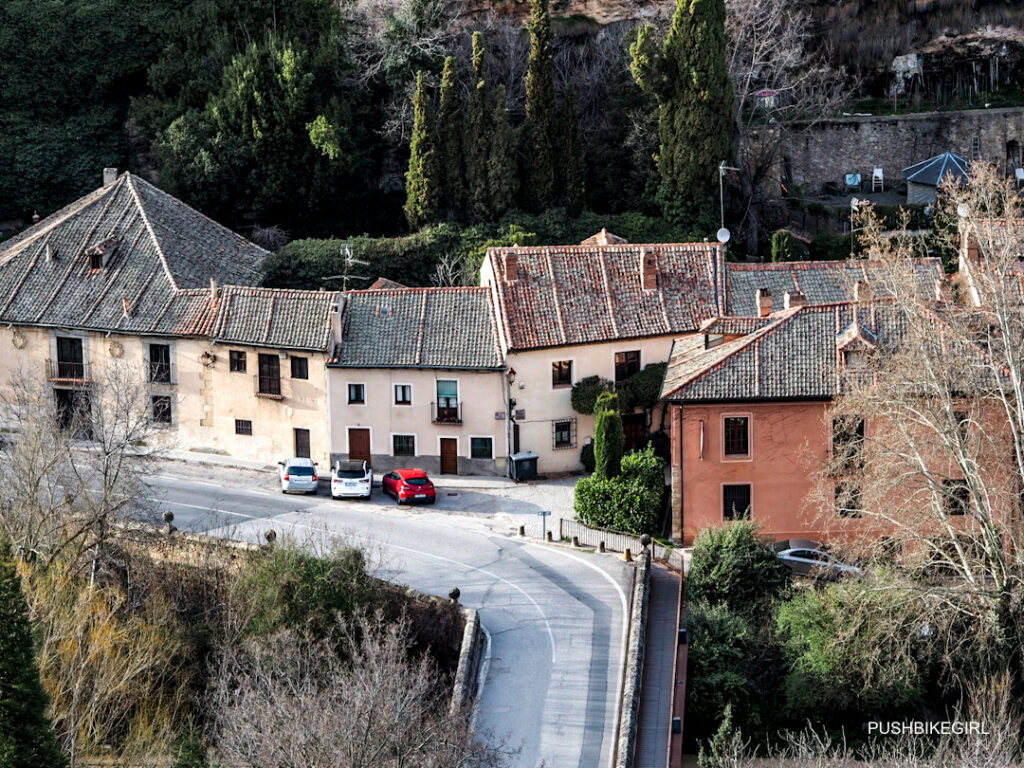
I wanted to use the walk to get used to my old world again. To find the beauties of Europe, get to know my home continent better, and give it another chance.
Admittedly, I was skeptical yet looking forward to what was to come.
And who knows, if hiking will make us happy, there are endless opportunities to keep walking. We will see.
Inshallah.
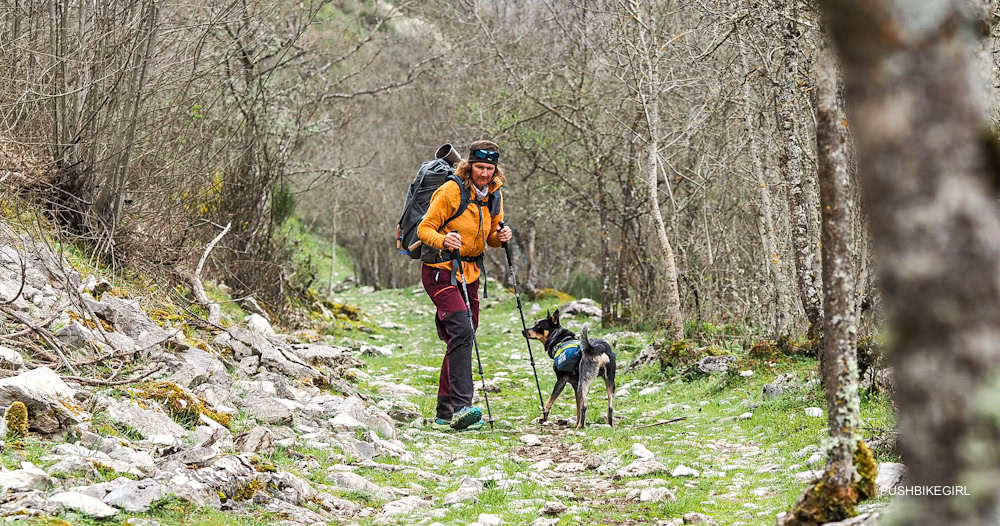
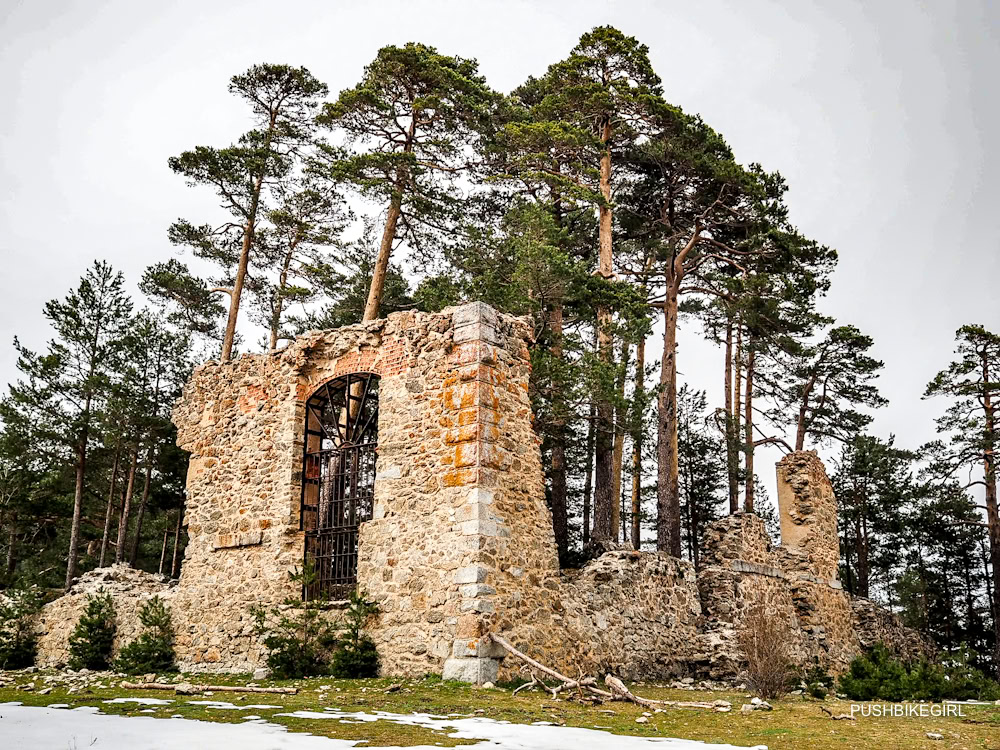
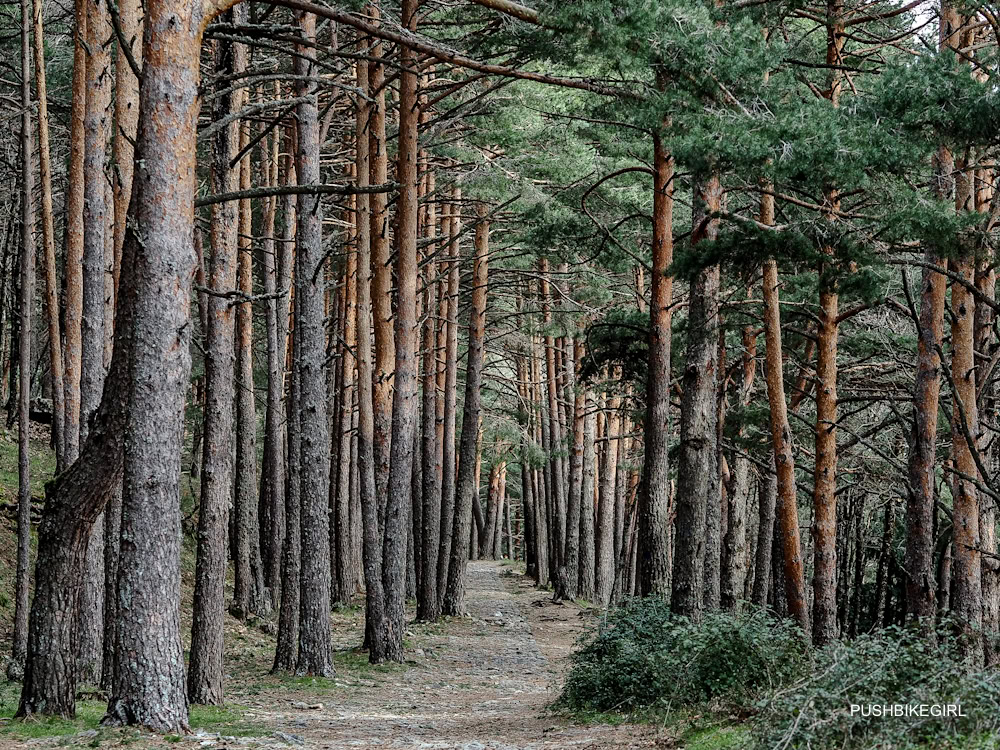

One thing is clear: we will undoubtedly return to Asia after Europe, as it is so easy to reach by land and remains the most fascinating continent to me. But, slowly, for now, we are off to a new start—one thing at a time.
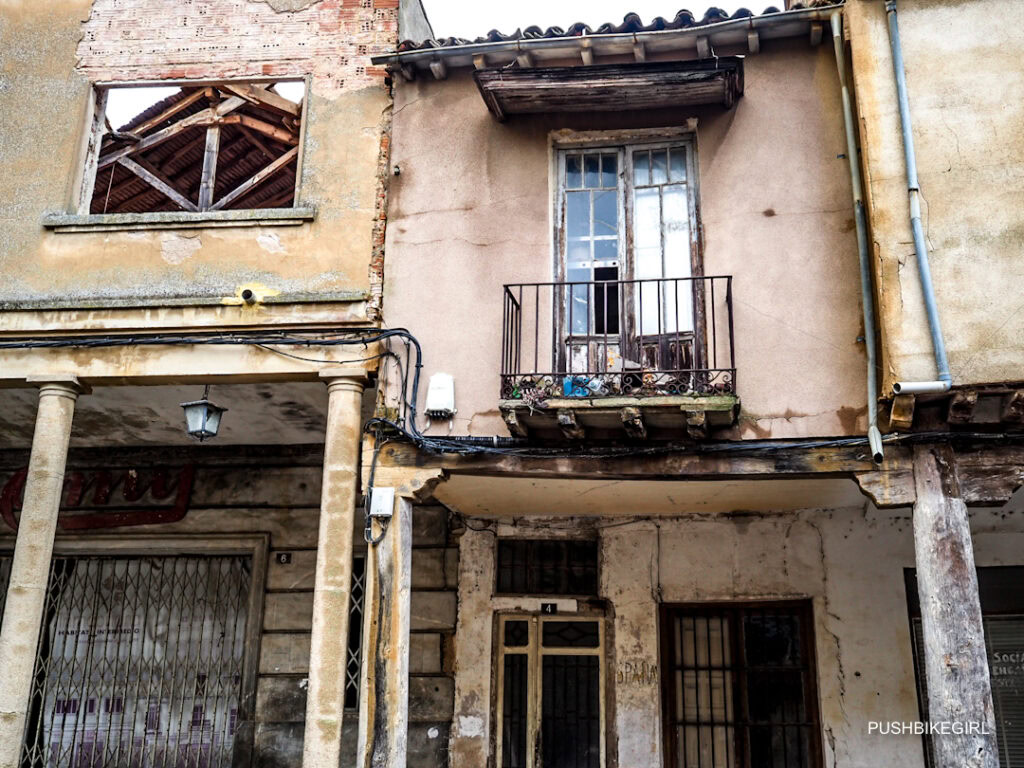
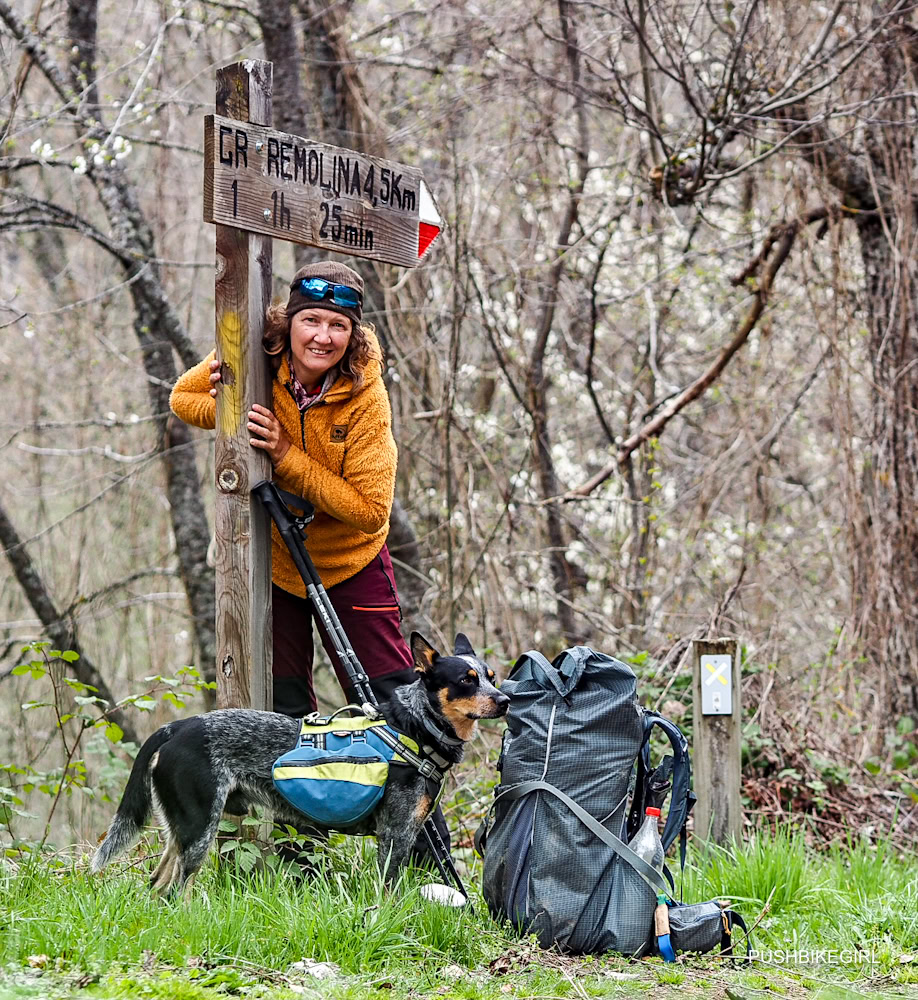
The Camino Madrid was well-signposted and easy to walk; it was just what I wanted to warm up. Most of the time, the route was flat gravel roads and dirt tracks that took us through small villages. There was hardly any traffic, no crowds, and it was sparsely populated.
The scenery wasn’t bad, but it wasn’t anything to write home about either.
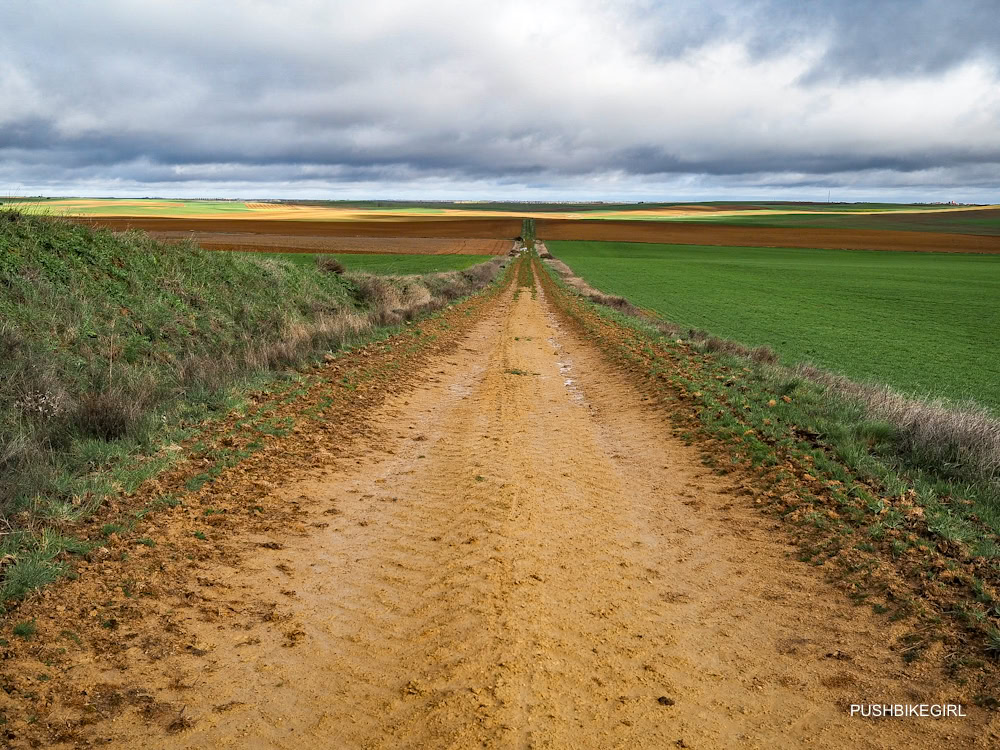
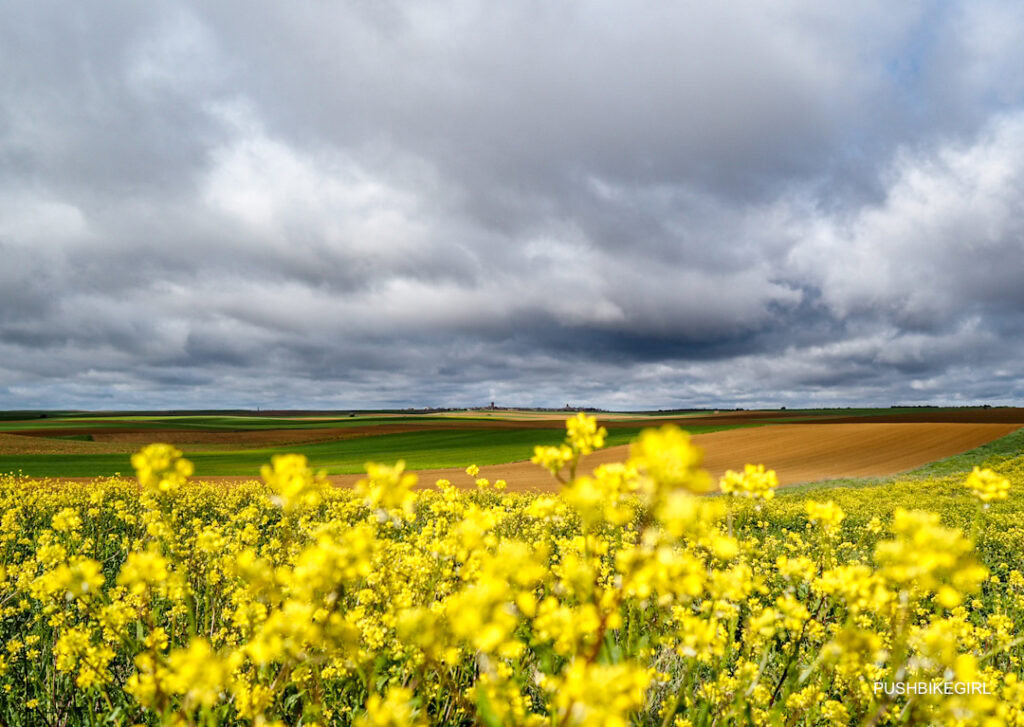
I particularly enjoyed the bars in these villages, where you can buy something to eat or drink for very little. Quite often, a euro-fifty will get you a hot tea with one to three bites of tapas.
Or a big slice of tortilla, the famous Spanish potato omelette, served for breakfast in most bars, also only a euro-fifty.

It was a bit surprising to see people tossing all varieties of trash to the floor rather than leaving it on their table, just like in Vietnam or China. Napkins, wrappers, and empty sugar packets, are all tossed to the floor. Lots of smokers here in Spain, so most bar fronts are, of course, littered with butts.
The volume level is also similar to the Chinese or Vietnamese style; people don’t talk here; they literally shout at each other—the TV blasts in the background with the soccer commentator shouting over all the noise.
Apart from that, this part of Spain is spotlessly clean, very different from what I’ve seen on the Mediterranean coast where I was often horrified by the amount of garbage on the side of the road.
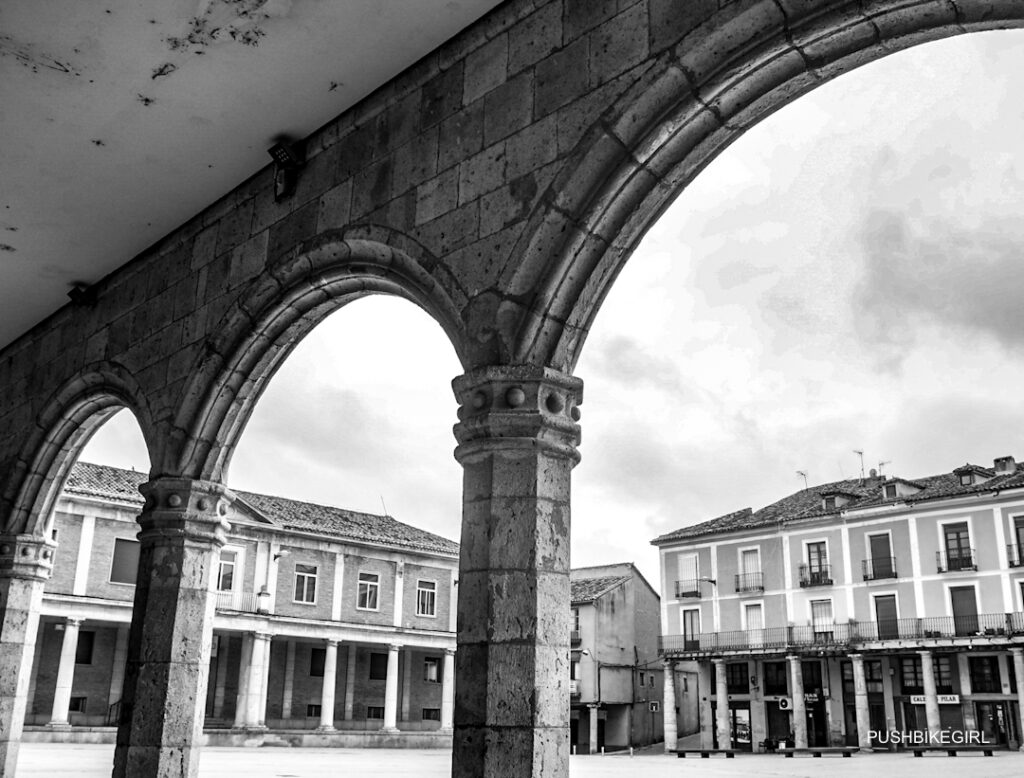
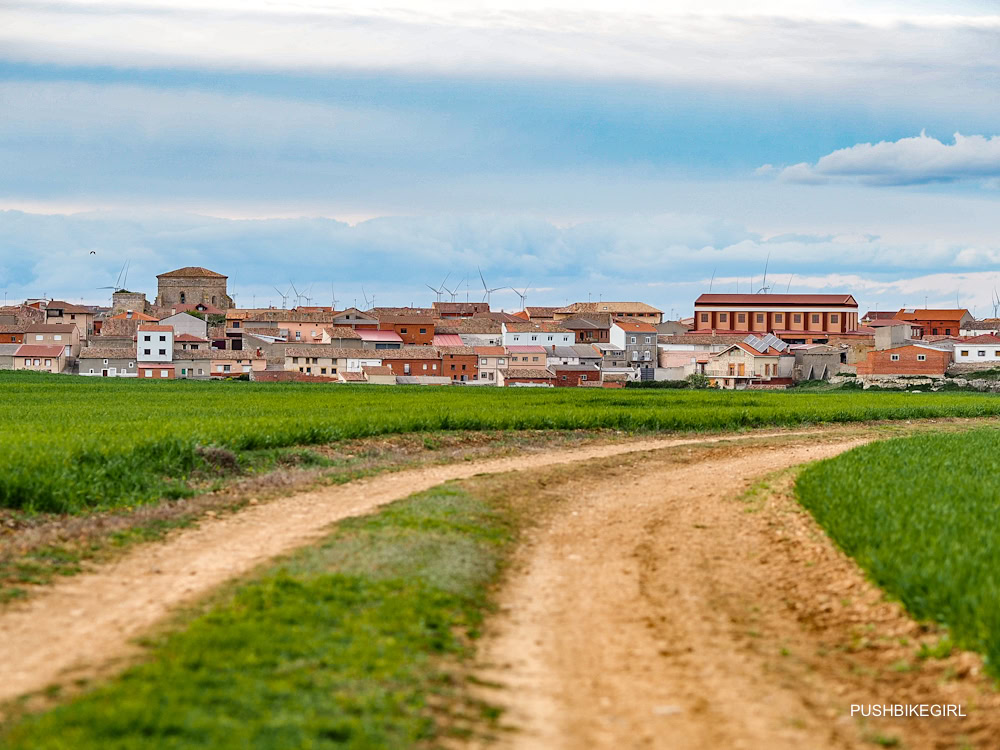
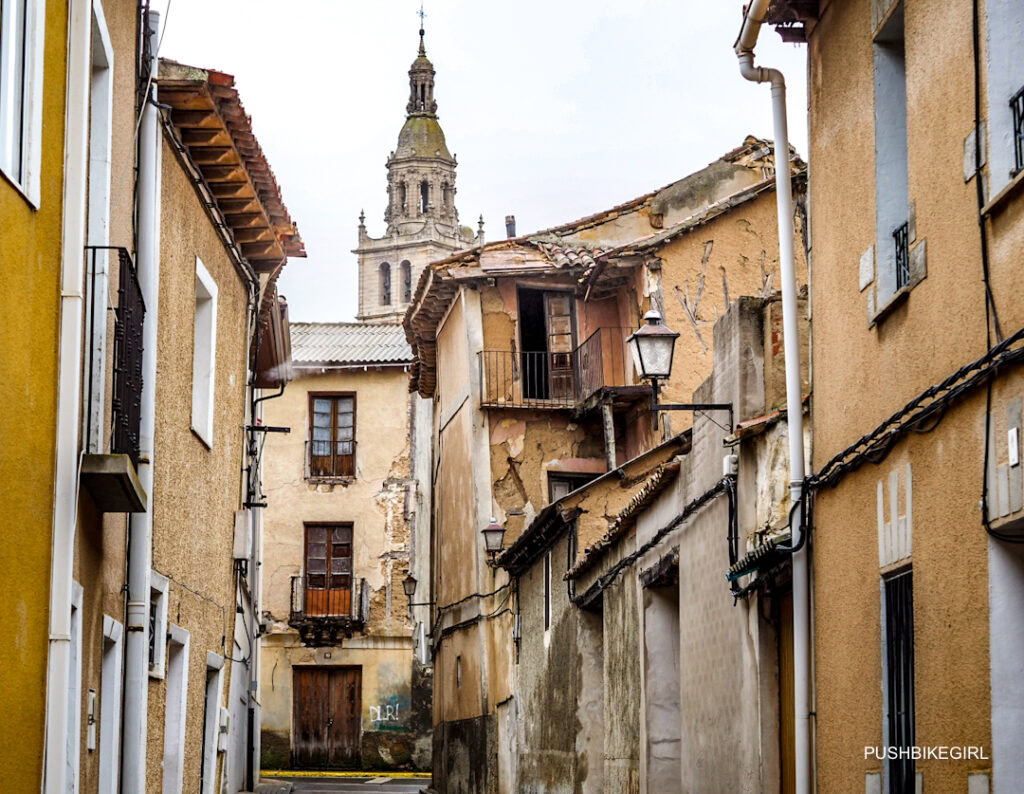
The bar is the meeting point in every town, and so I always had a destination in mind and moved from one tea as a reward to the next.
We are back in Europe, so every village has at least one church, small alleyways, attractive houses, and a nice flair.
Apart from the bars, I didn’t meet many people; the villages were often deserted.
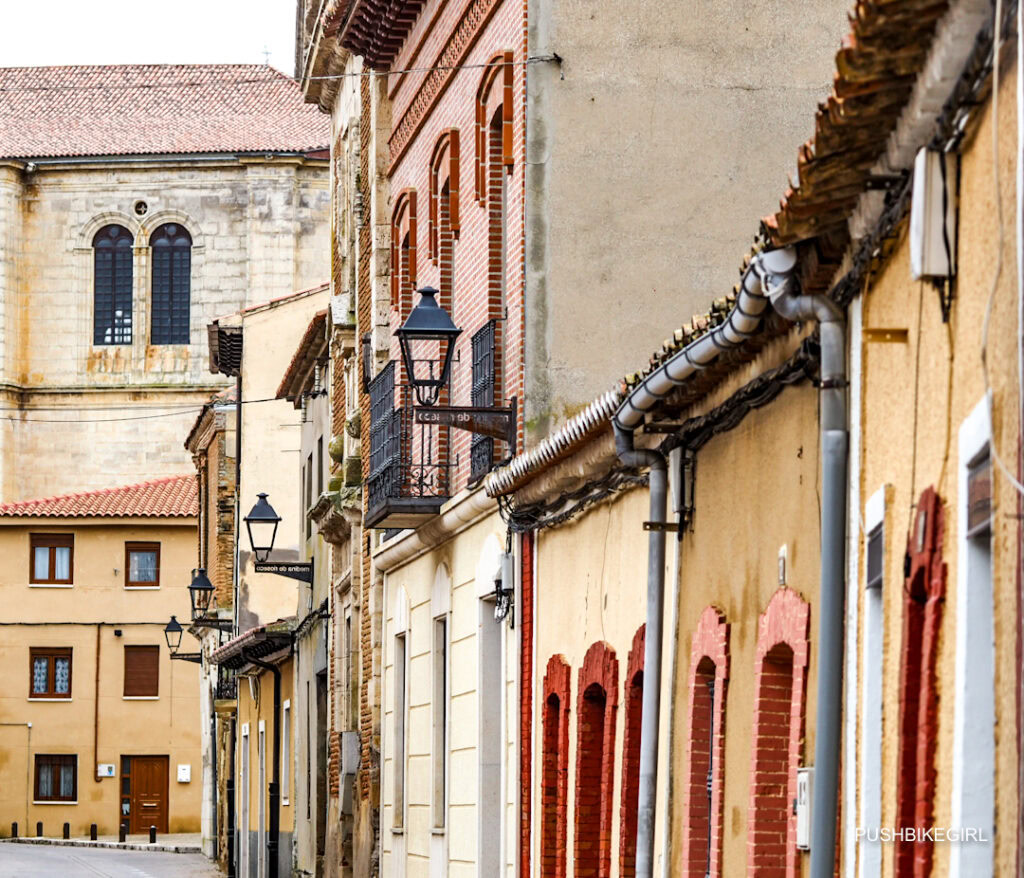
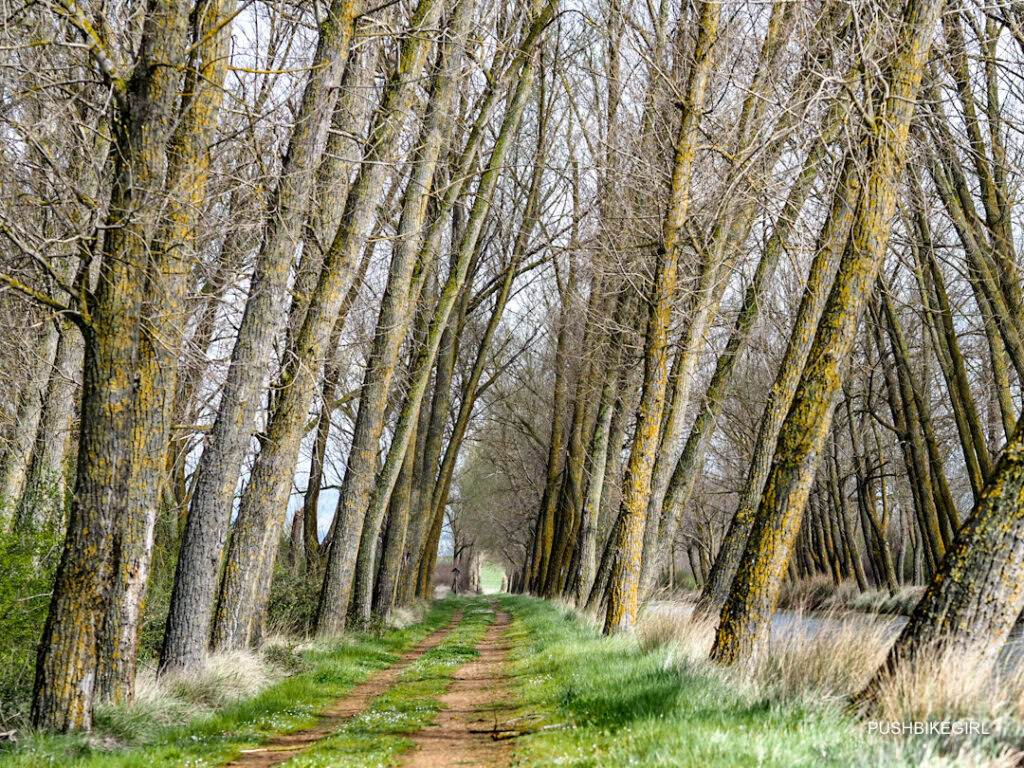
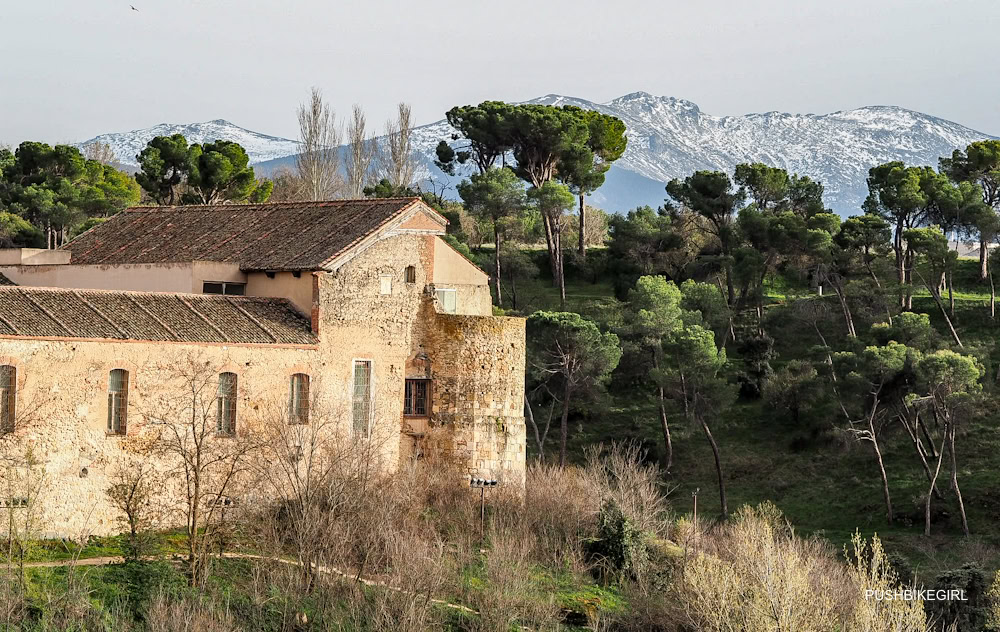
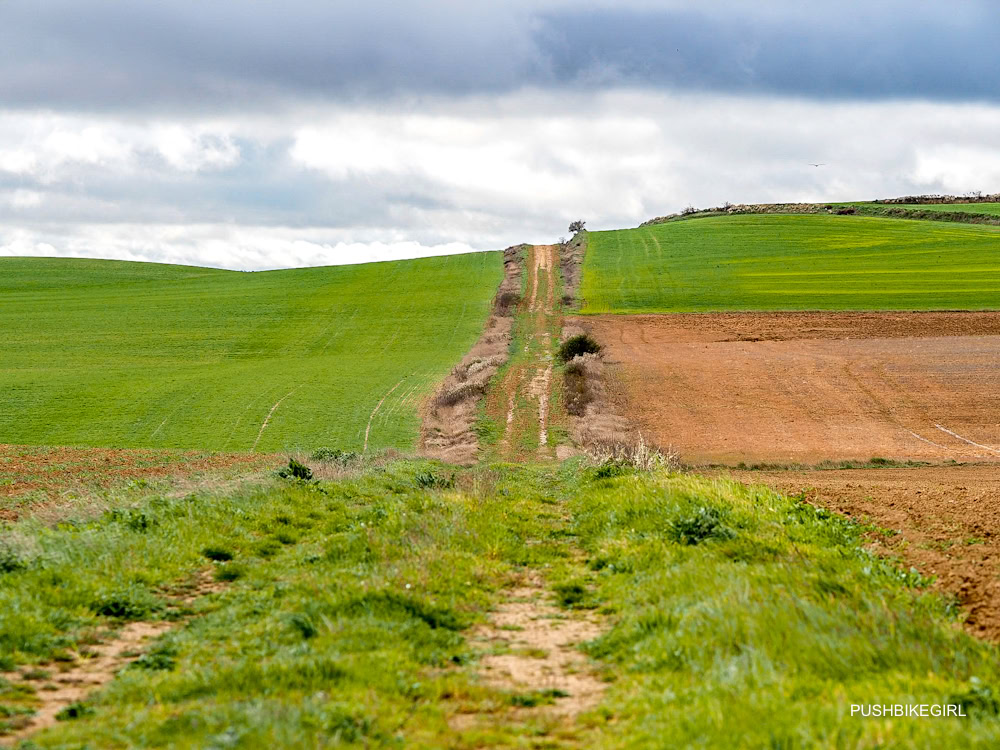
I got to know all kinds of bar owners. From stuffy Chinese men to lovely young Spanish women, friendly and relaxed men, grumpy-faced women, and ill-tempered arrogant guys.
Sometimes Butch was allowed into the bar; other times, we had to sit outside.
I would have loved to have photographed the scenes in the bars, but such shots are no longer permitted. Thanks to EU directives. I’m not interested in being fined for violating someone’s privacy.
I called a waitress, Señorita, in a bar and received a nasty look. I immediately apologized and explained that I had just come from South America and that it was customary to say Señorita there. At this point, I was told, “Maybe, but not in Spain.”
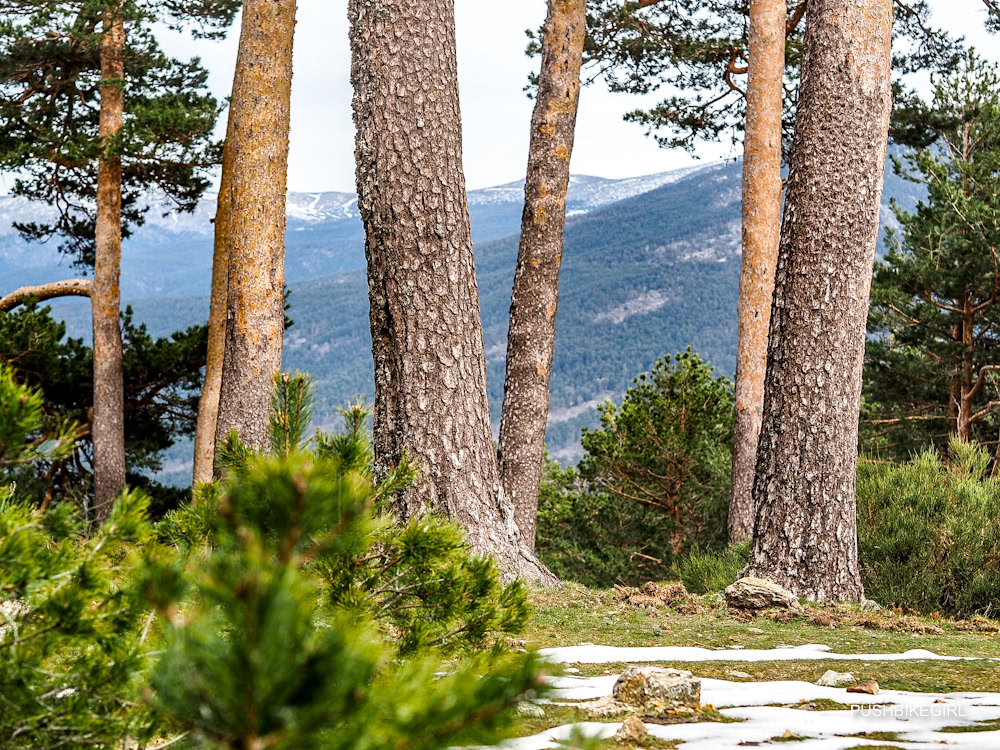

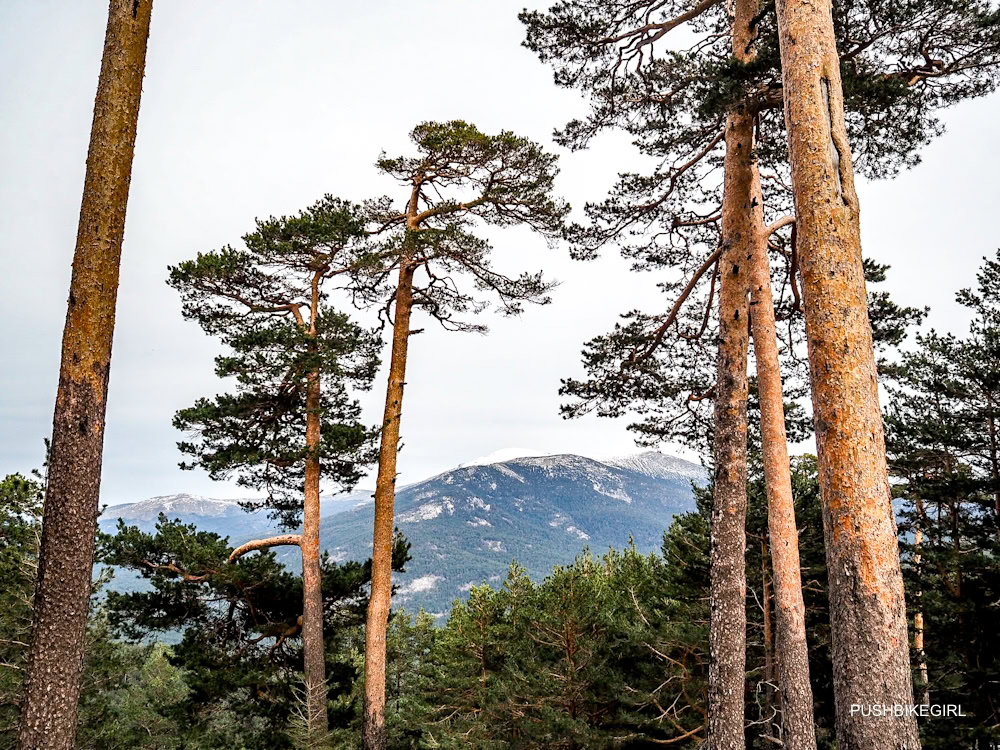
Shortly before the beautiful town of Segovia, we passed through the mountains. We even trudged through the snow at the summit, hiked through pine forests, and camped right next to the path just before the gates of Segovia because there was no other option.


Wild camping is forbidden in Spain, but staying overnight is generally expensive and often not allowed with a dog.
As long as I leave everything clean, I don’t see any reason why I shouldn’t camp.
So we were sitting in front of our tent in the morning, and I was trying to dry everything after the damp night when a few joggers and dog walkers passed us and gave us dark looks. Only one person smiled and asked if we were walking the Camino.
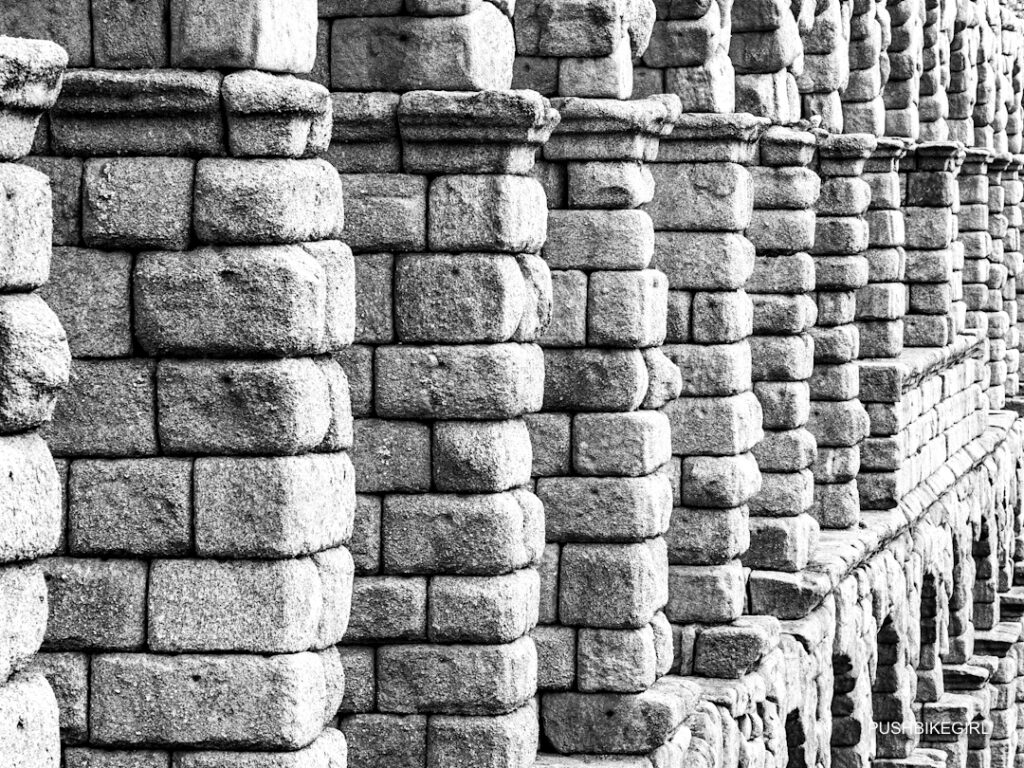
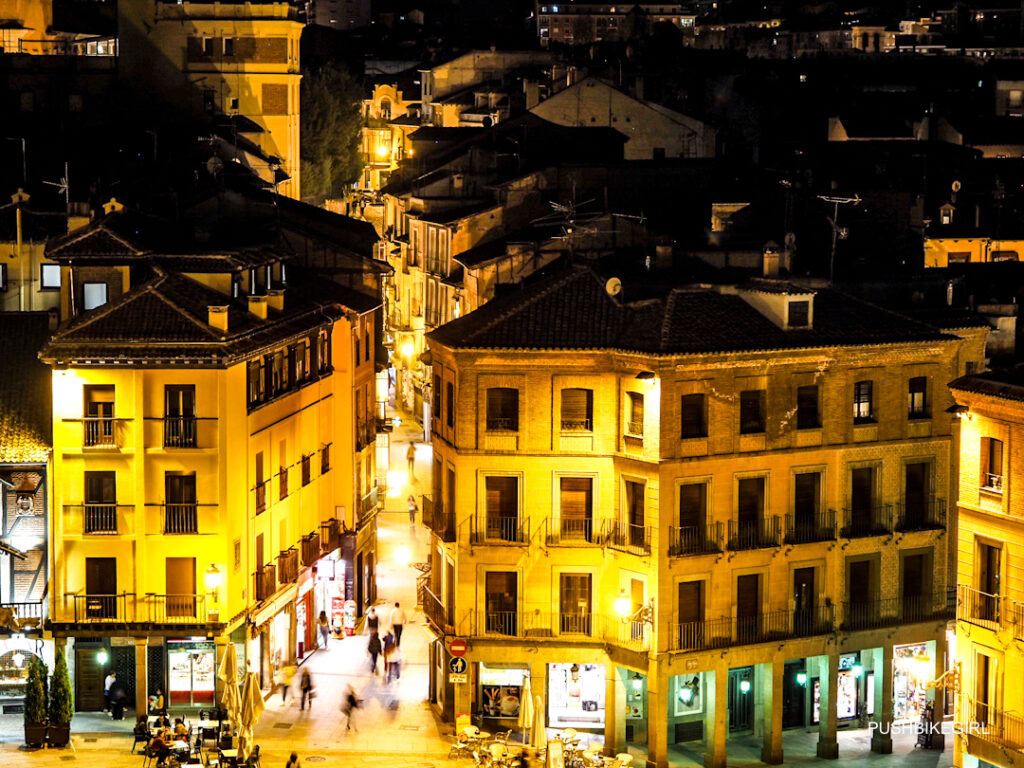
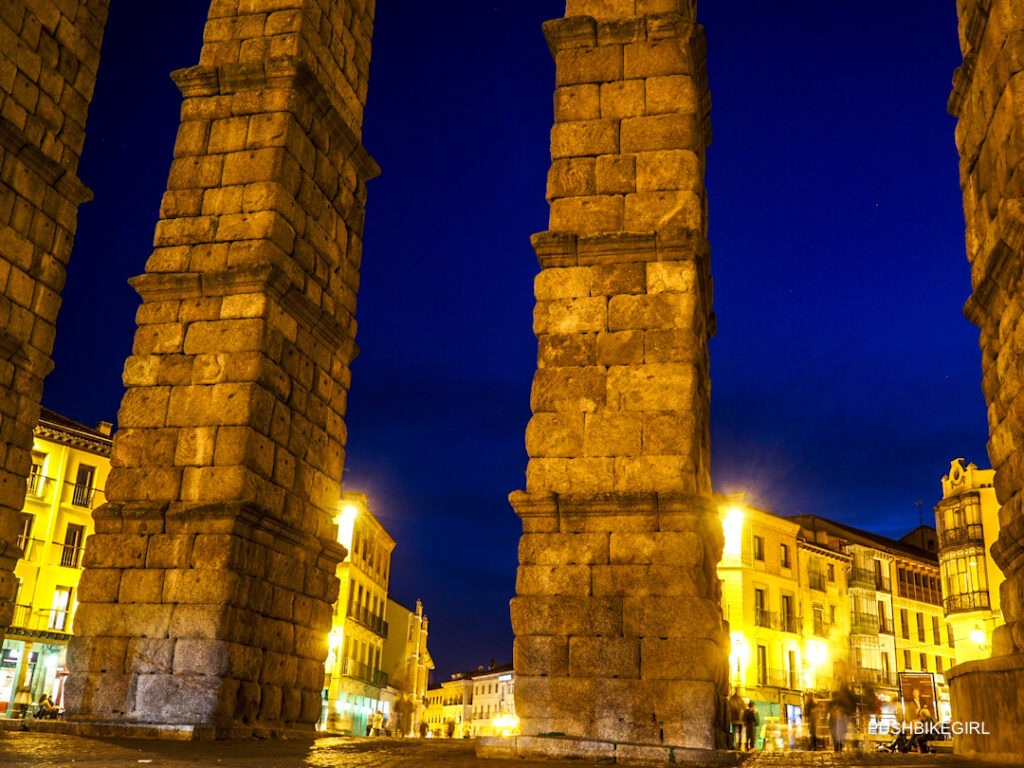
In Segovia, I got myself the scallop shell designating me as a pilgrim, which helped in the end because people were much friendlier from then on, and I kept hearing a loud “Buen Camino,” which I was pleased about.
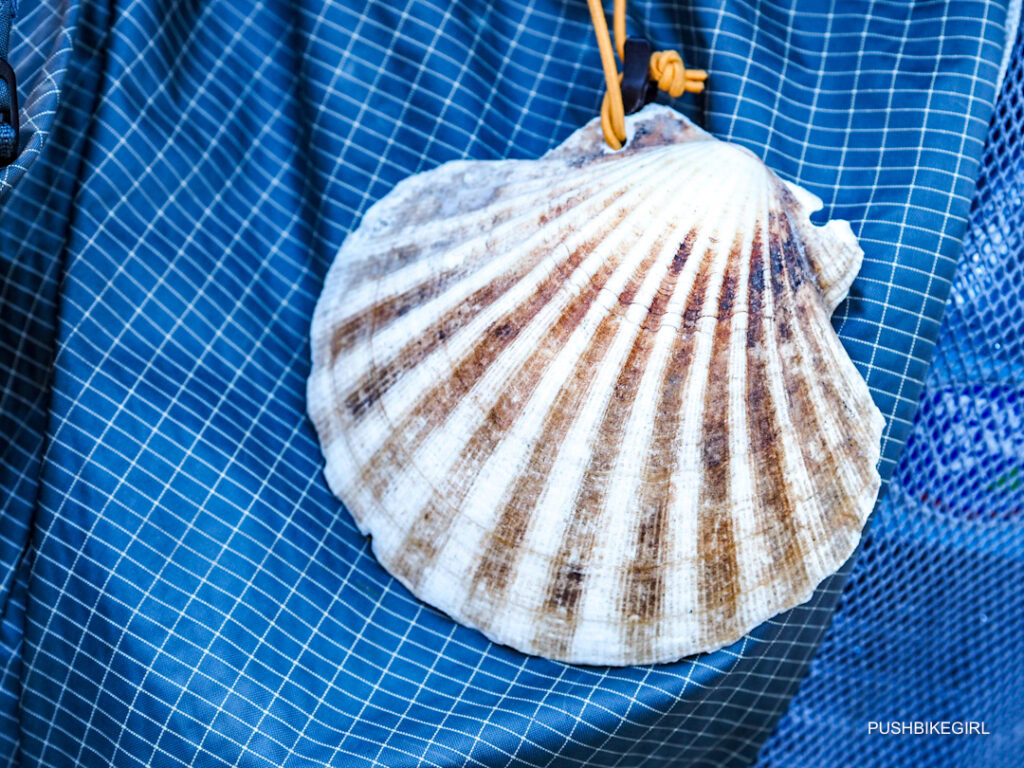
Segovia is superb! It is a magnificent city. Supposedly, the largest aqueduct in Europe runs right through the city center.
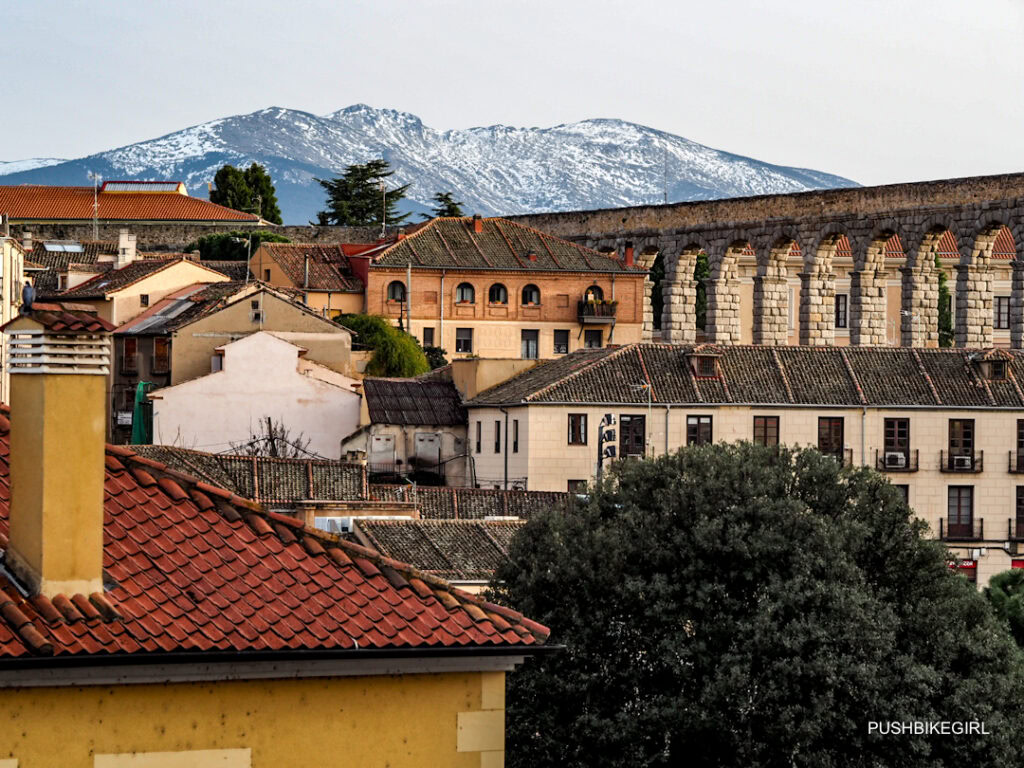
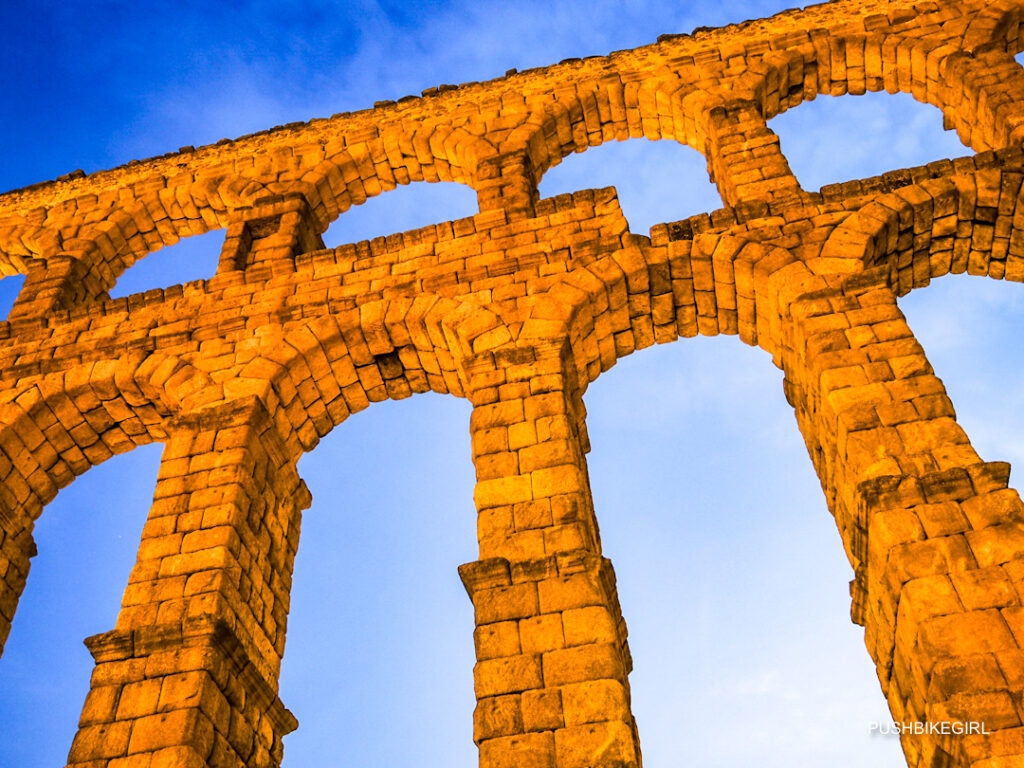
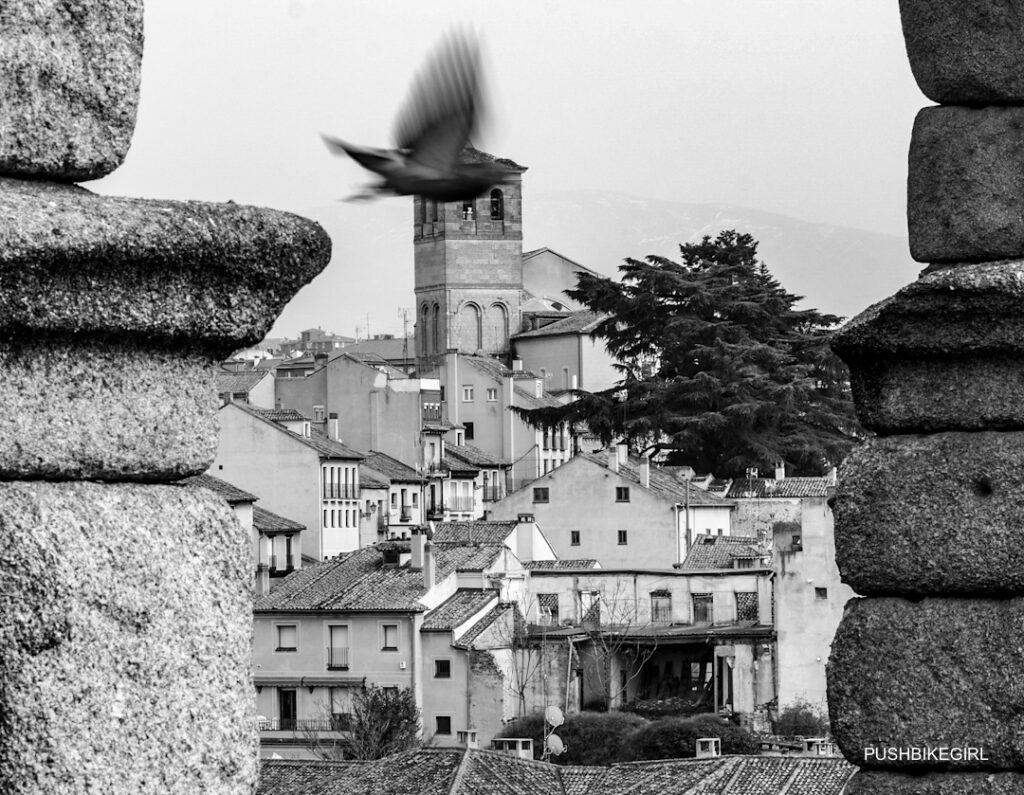
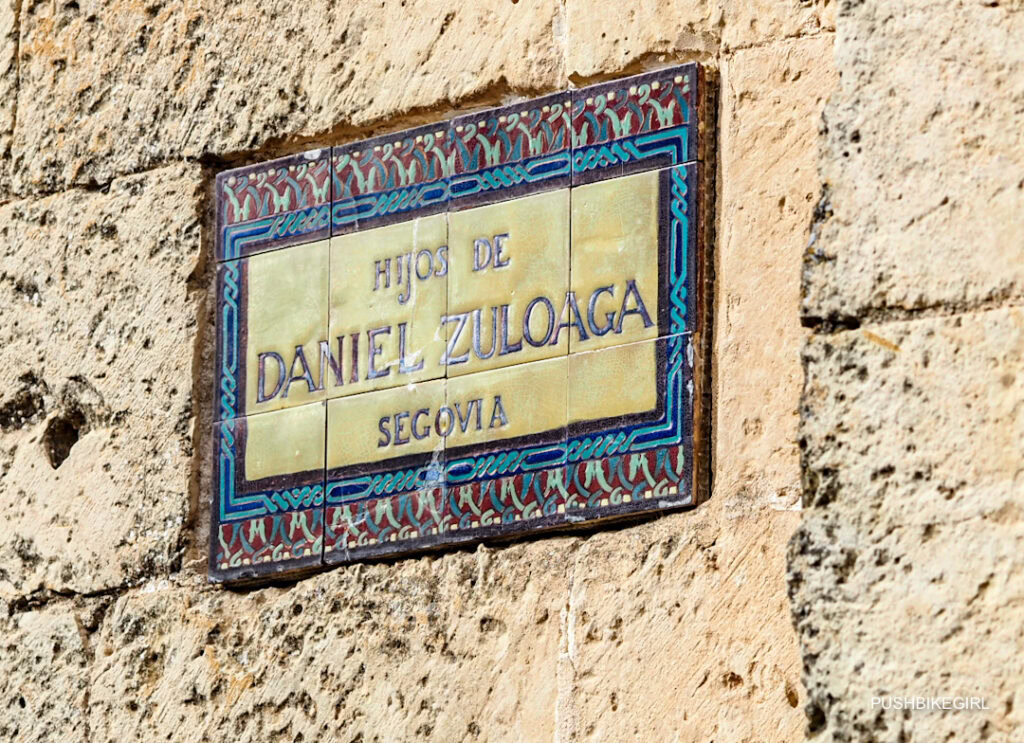
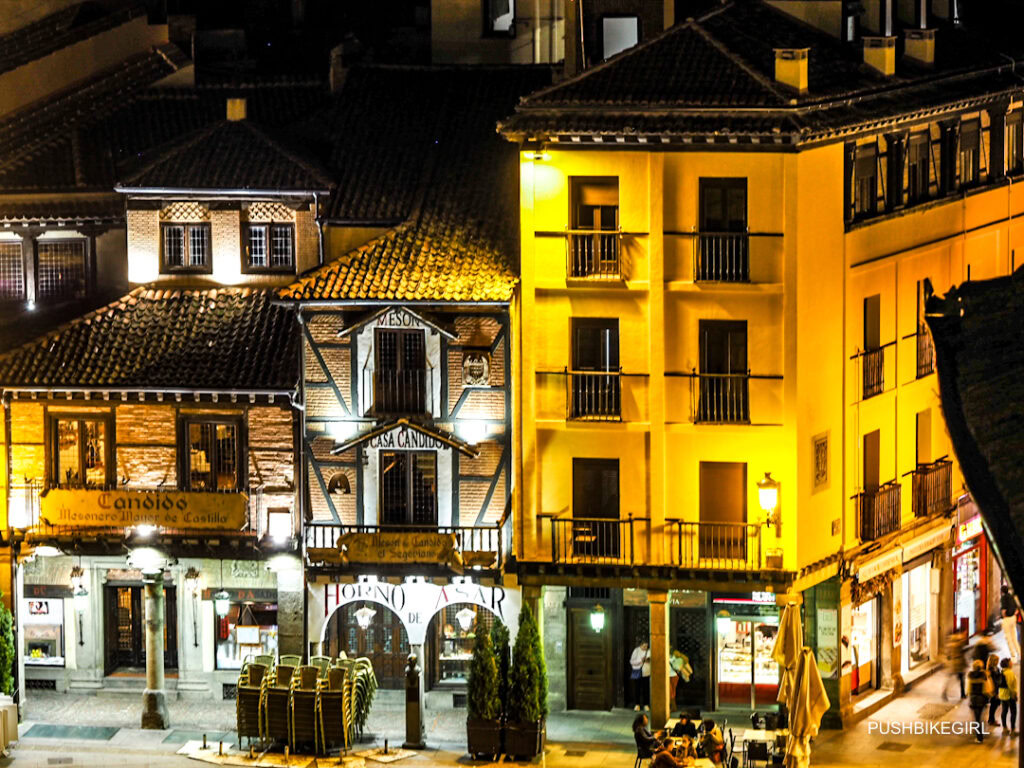
I also bought a Camino stamp booklet, the Credencial del Peregrino. However, I think it’s a little silly; it’s supposed to help with the accommodation, as we’re not allowed to stay overnight in the pilgrims’ hostels without proof of pilgrimage.
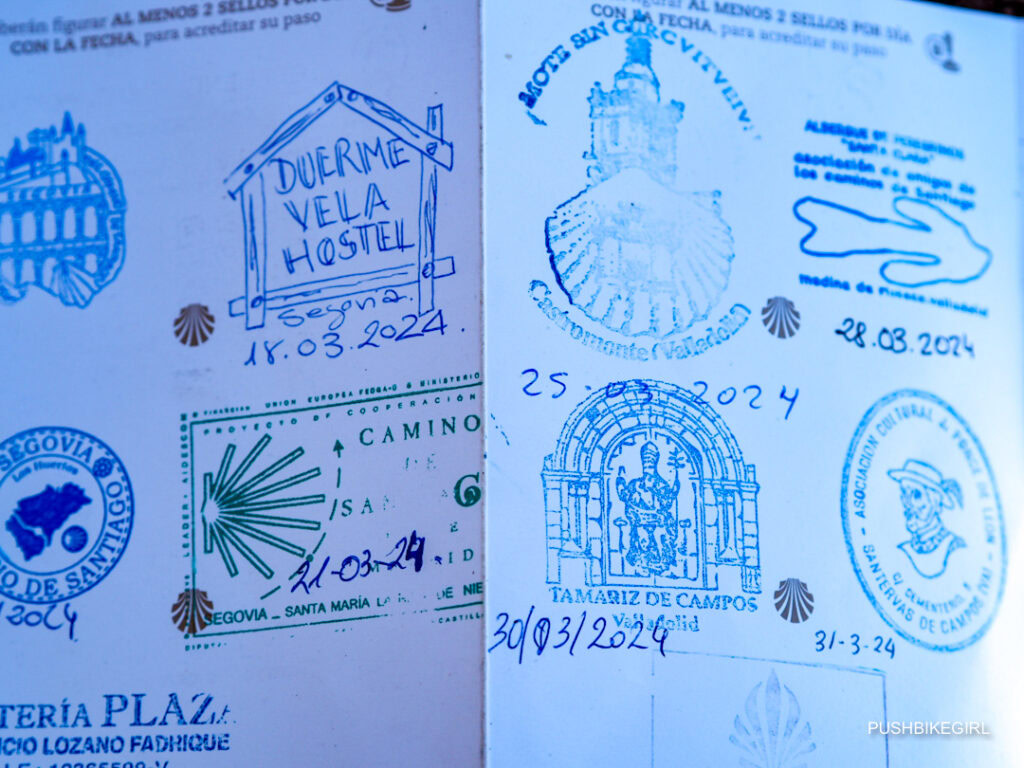
As we left Segovia, the landscape changed abruptly.
A motorcyclist warned me beforehand and said: “Forget the route; it’s super ugly. Take the bus.”
Of course, we carried on walking, especially as Butch wasn’t allowed on the bus anyway, and we wanted to warm up.

Shortly before the next stage, I met an American. A painter, a pilgrim, the first pilgrim we had met.
We were lucky that Butch was allowed in the small four-bed hostel that we reached at the end of the stage because from then on, the weather took a turn for the worse, and we had a lot of rain and cold.
Together with the Yank, we shared a shared room for 5 euros.
We walked about 25 to 30 km a day. My foot had good and not-so-good days, but we progressed.
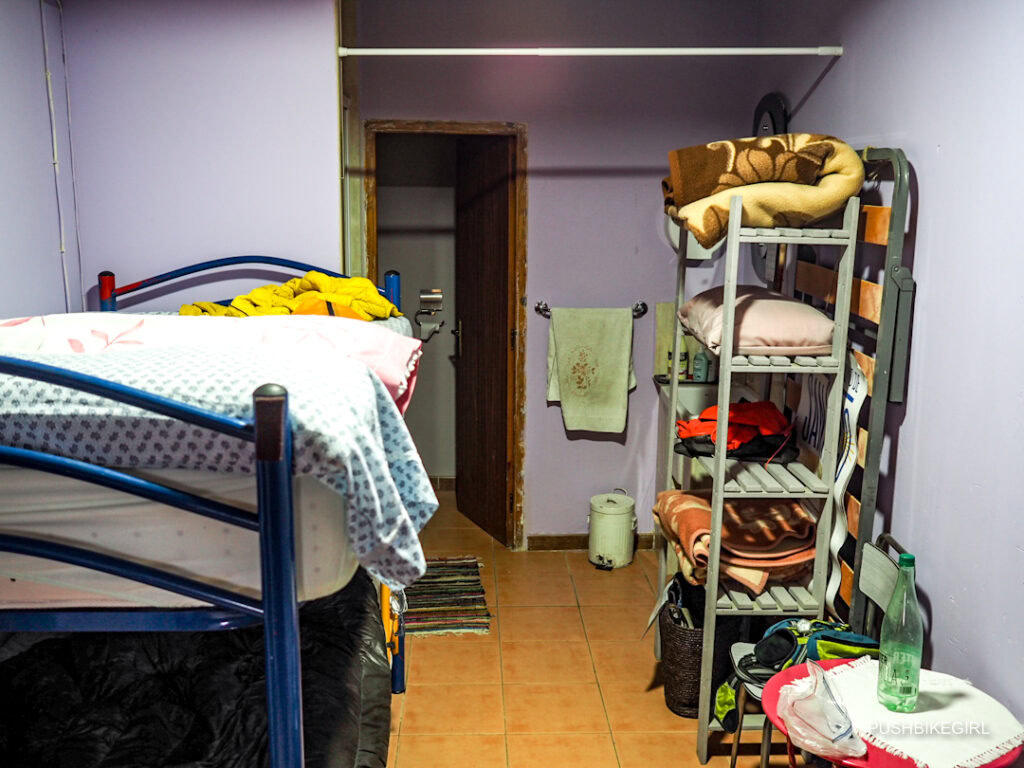
Butch carries his own food and toys and I make sure that he doesn’t have to carry more than 2 kilos, which is 10% of his body weight and he can easily manage that.
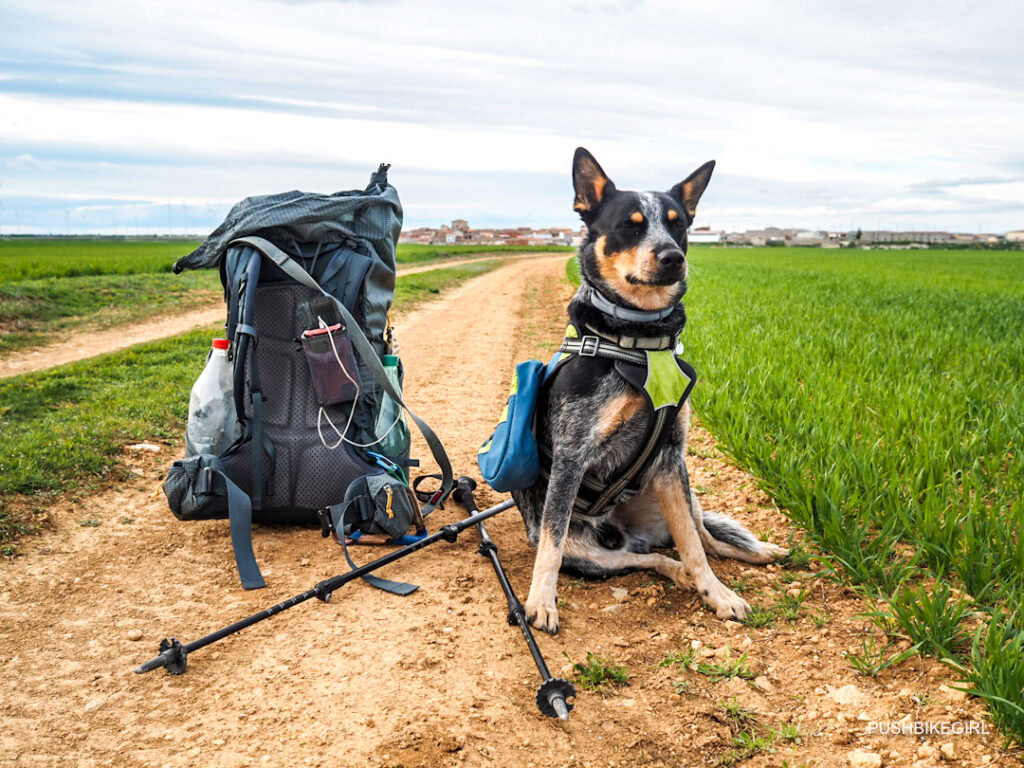
My backpack is still too heavy; unfortunately, I even carry my external hard drive around because I don’t want to risk losing my data.
We kept bumping into Stephan, the American. He walked about the same distance as we did and took his bearings from the hostels because he was traveling without a tent.
After I found out that you could spend the night in most hostels for a donation or for 5 euros, I took the opportunity to stay somewhere every rainy day, but Butch wasn’t welcome everywhere.
That’s why we once slept in the boiler room of a hostel, but it was better there than outside in the pouring rain; more on that later.
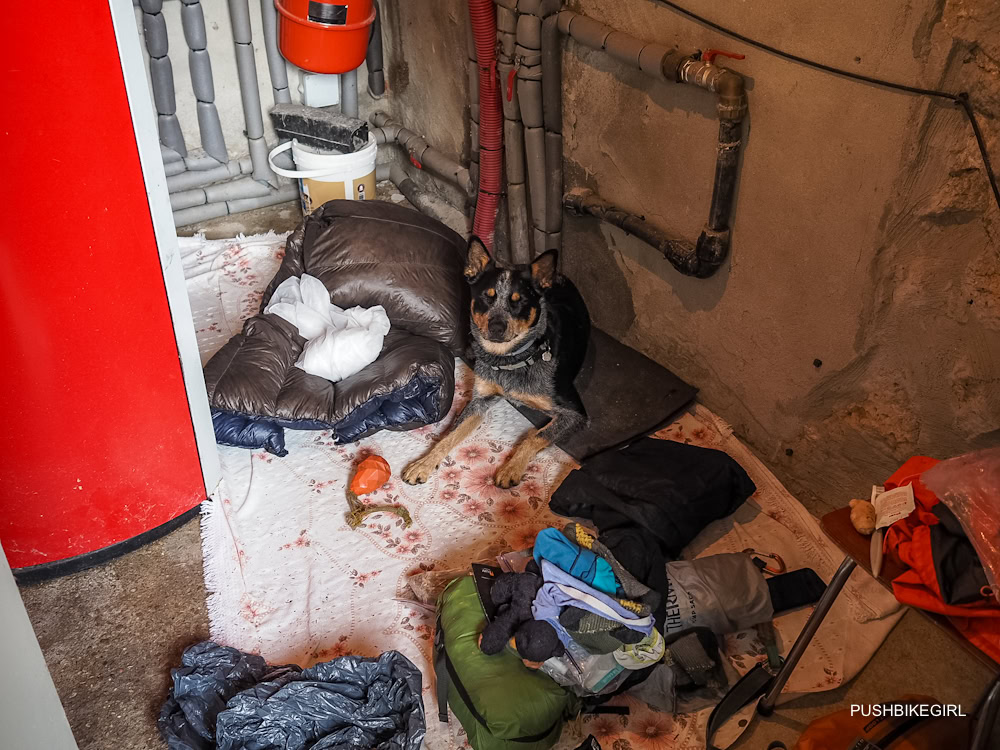
Sometimes, you have to get the keys for the shelters in a bar; other times, you pay a sum of money online and can open a box with a code to get the key.
There were also hostels where you had to call someone who brought the key and collected the money.
We were often alone or had at most one other pilgrim with us.
We had more rain on the Camino than I had had in the last four years. It was also cold, and it poured almost non-stop.
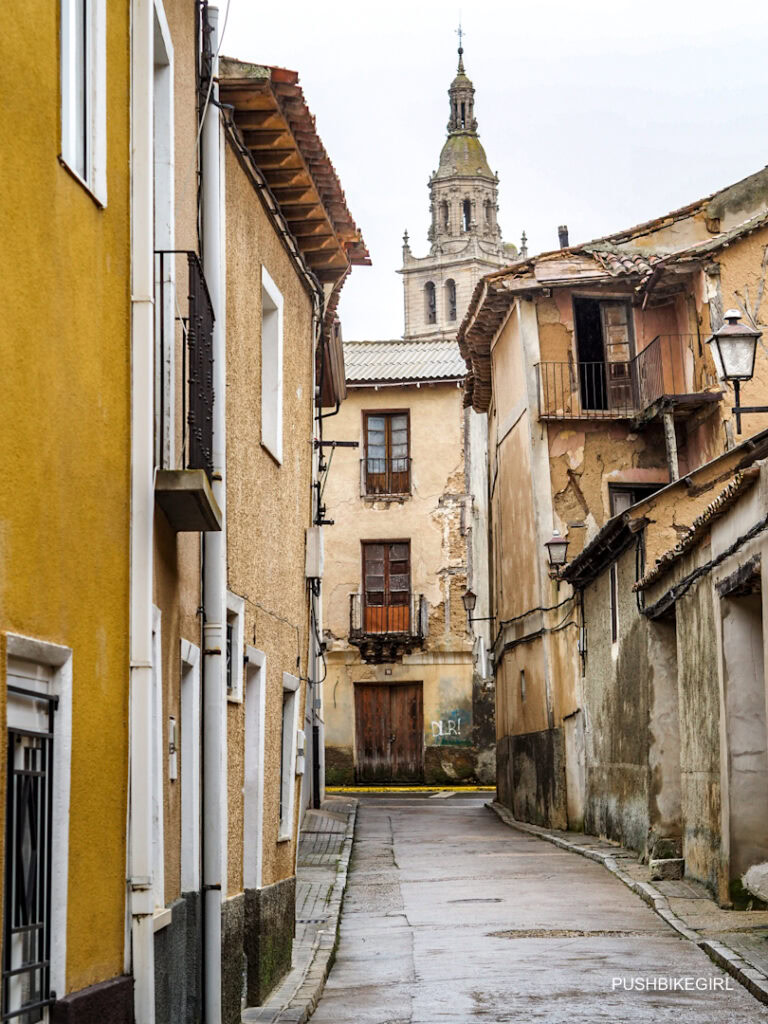
In Medina de Rioseco, I celebrated my birthday in the bathtub, having decided to treat myself to an accommodation that, to my surprise, had a bathtub. And I didn’t want to go any further due to the rain.
And so I sat in the hot bathtub for 10 hours and certainly enjoyed my day in a completely different way to how others celebrate their birthday. A bathtub makes me happy!
Shortly after my birthday, it was Easter, and I wanted to experience one of the world-famous Easter processions.
The Thursday procession, the day before Good Friday, was canceled due to rain. On Good Friday, however, the weather forecast was dry, so we were lucky to see the procession.
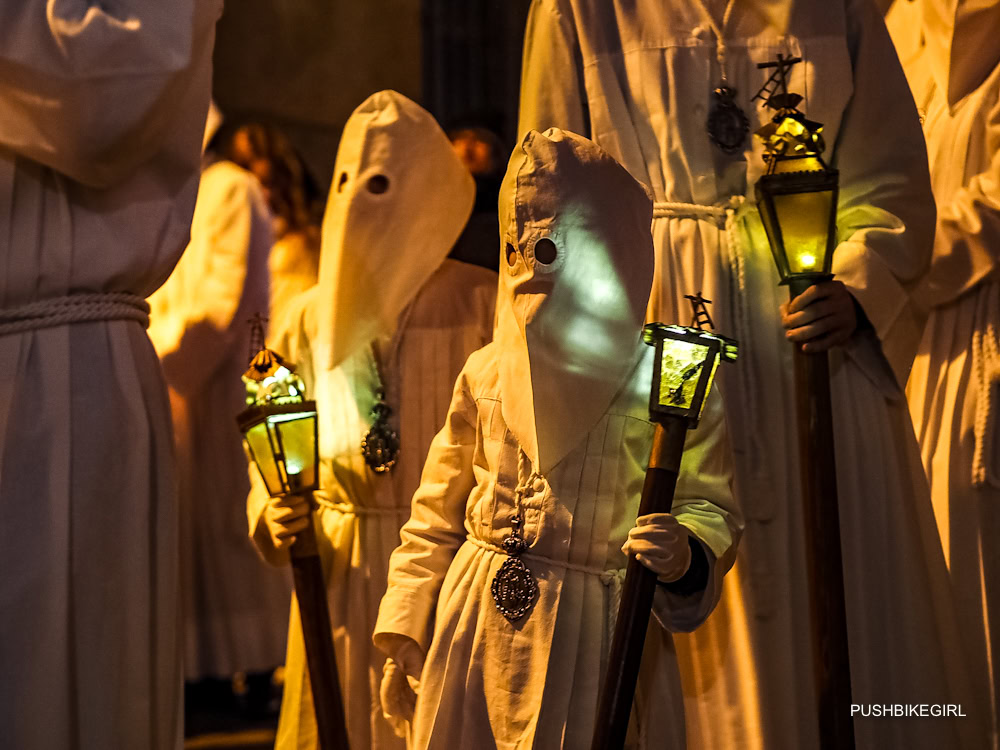

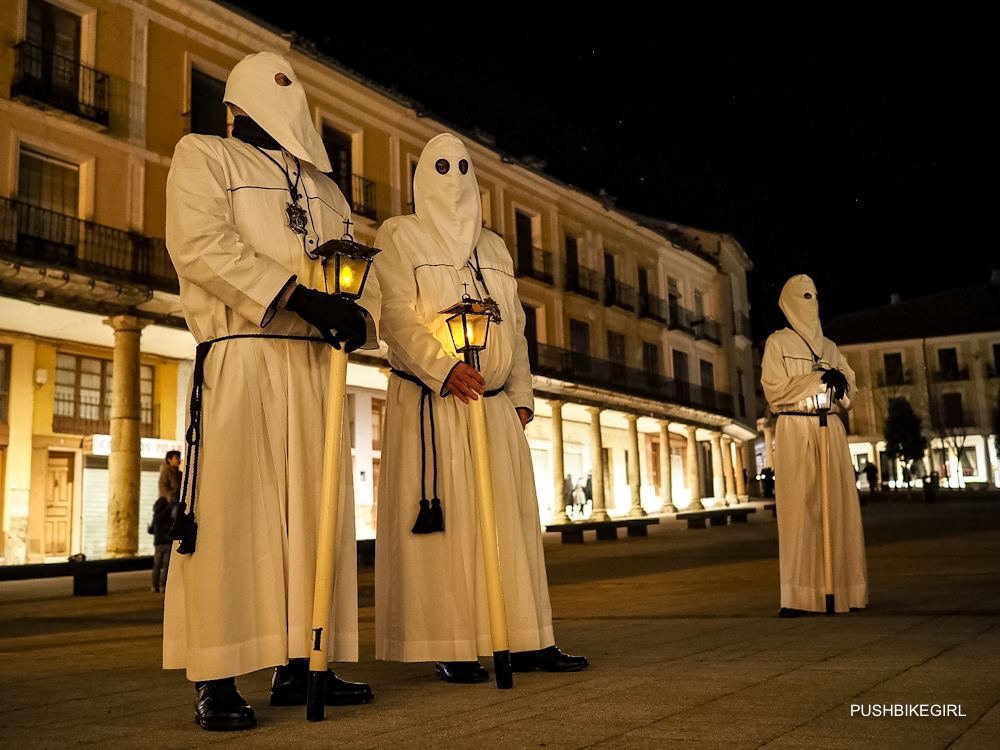
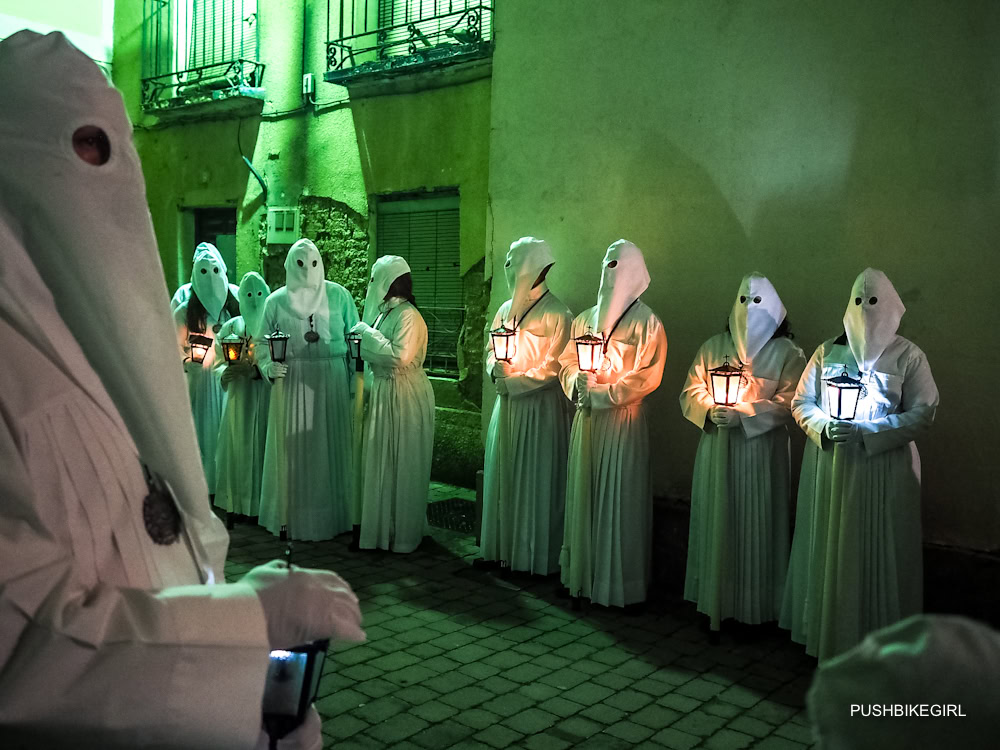
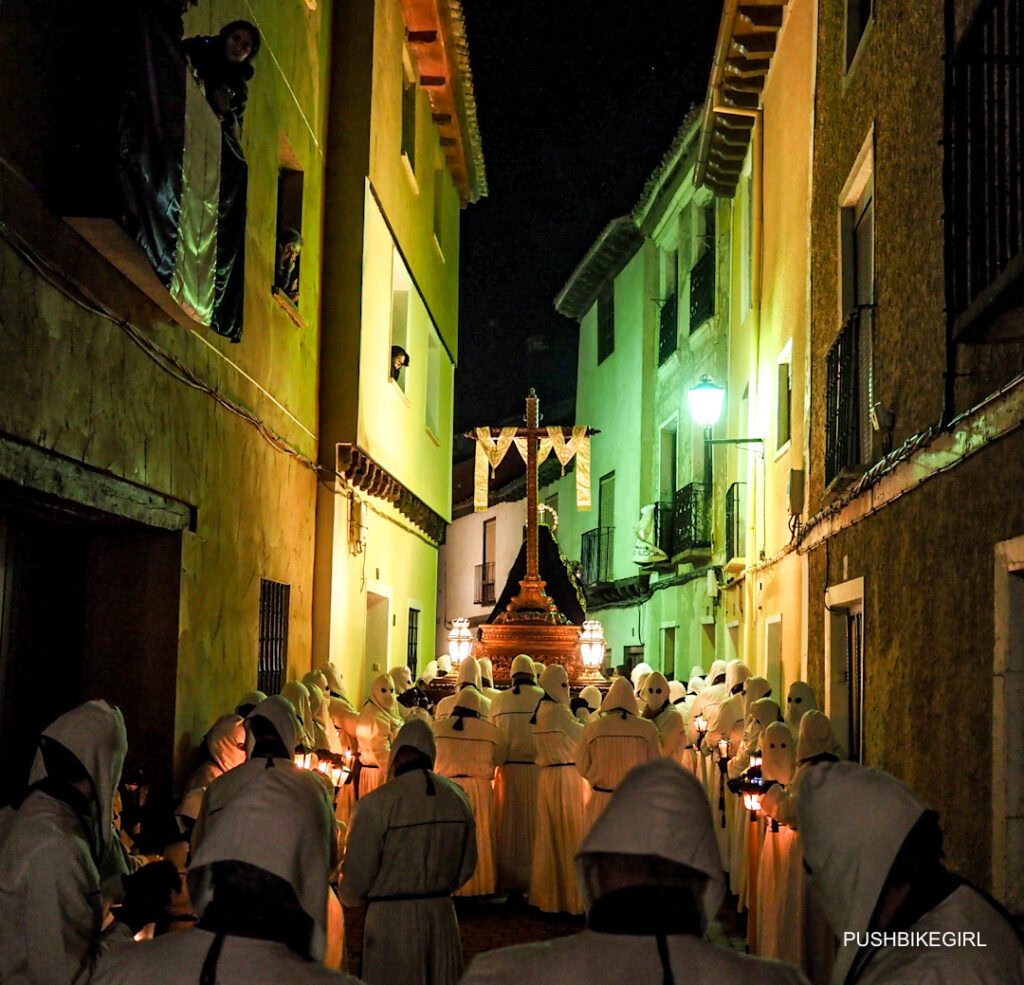
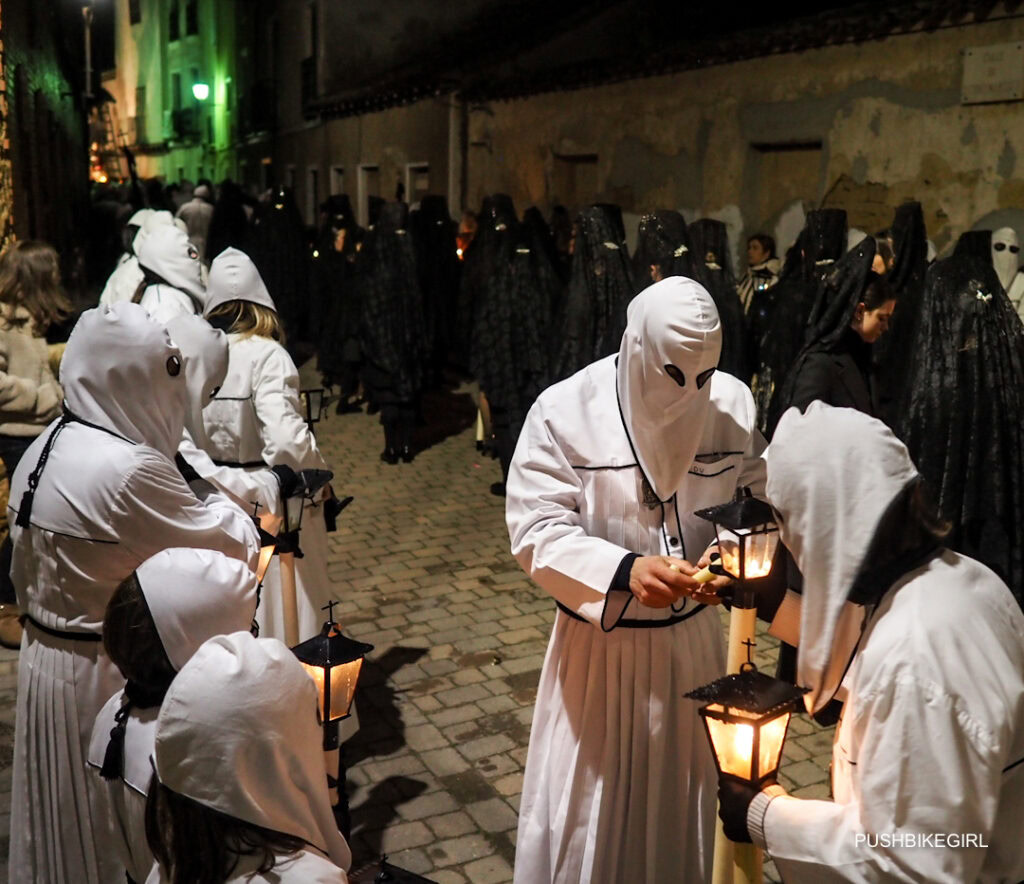
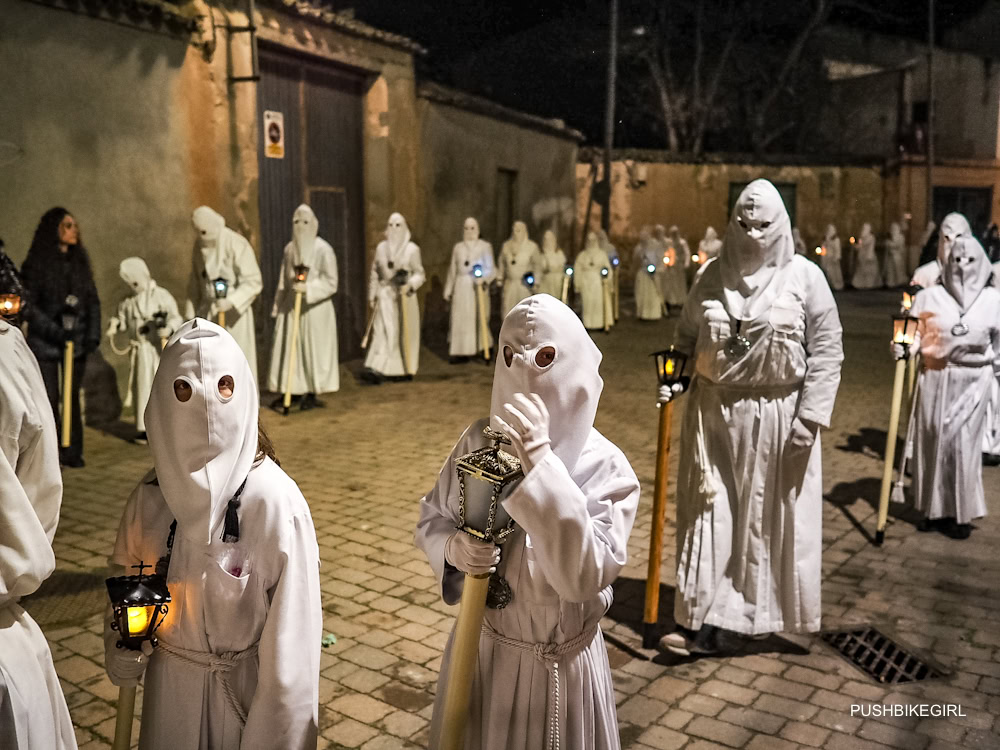
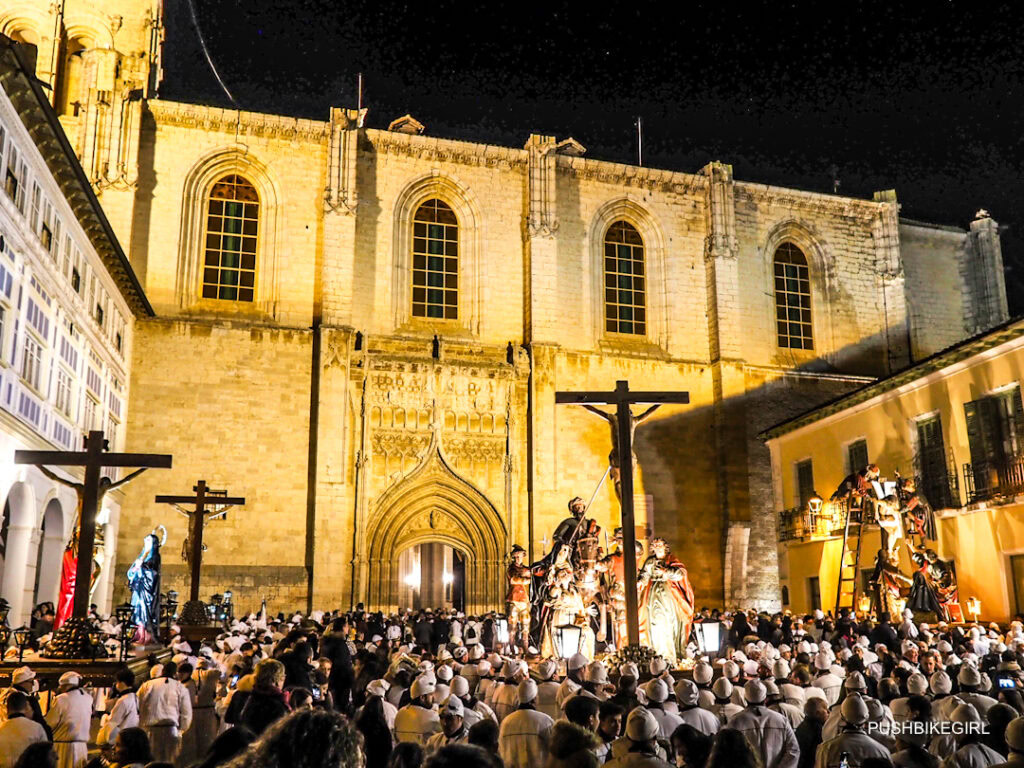


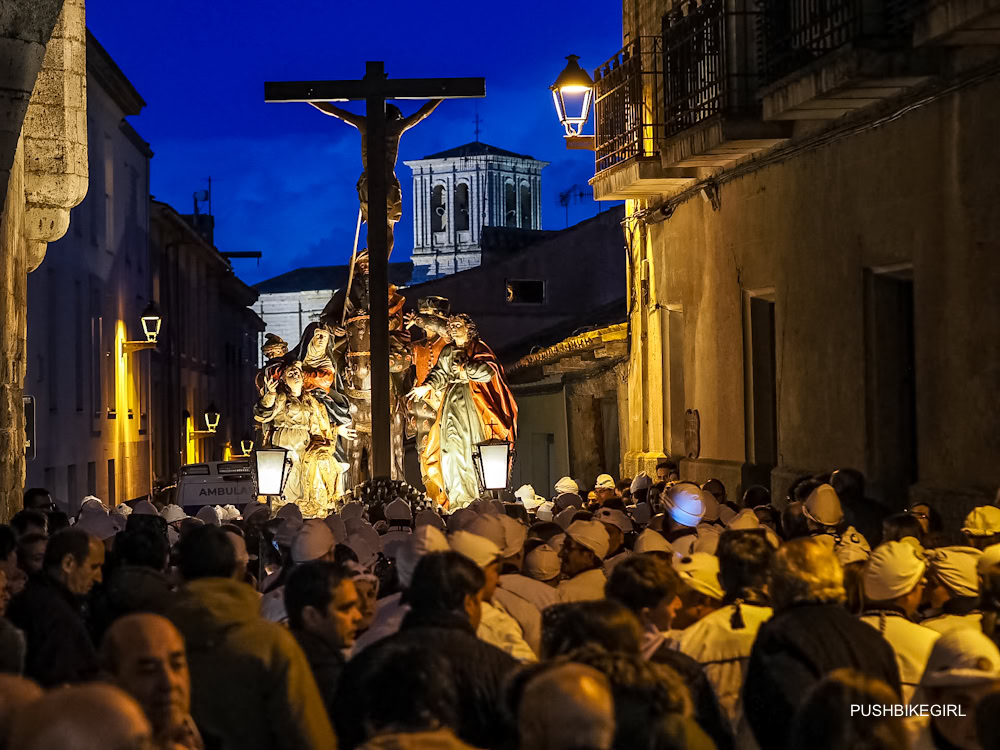
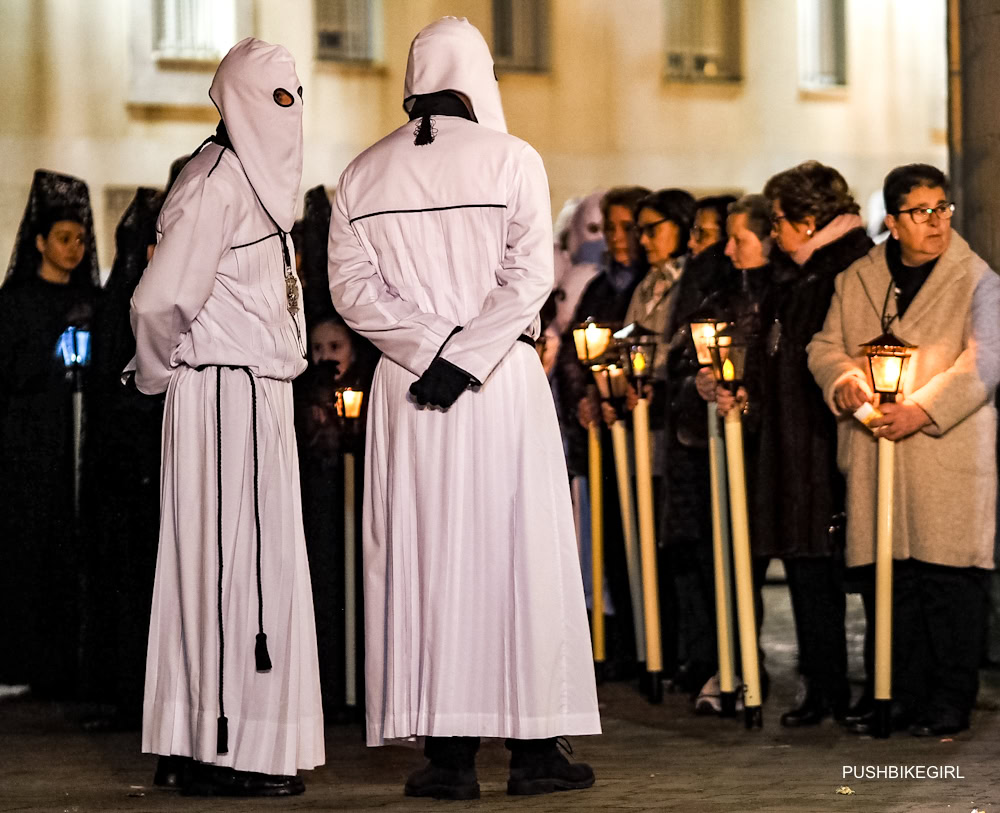
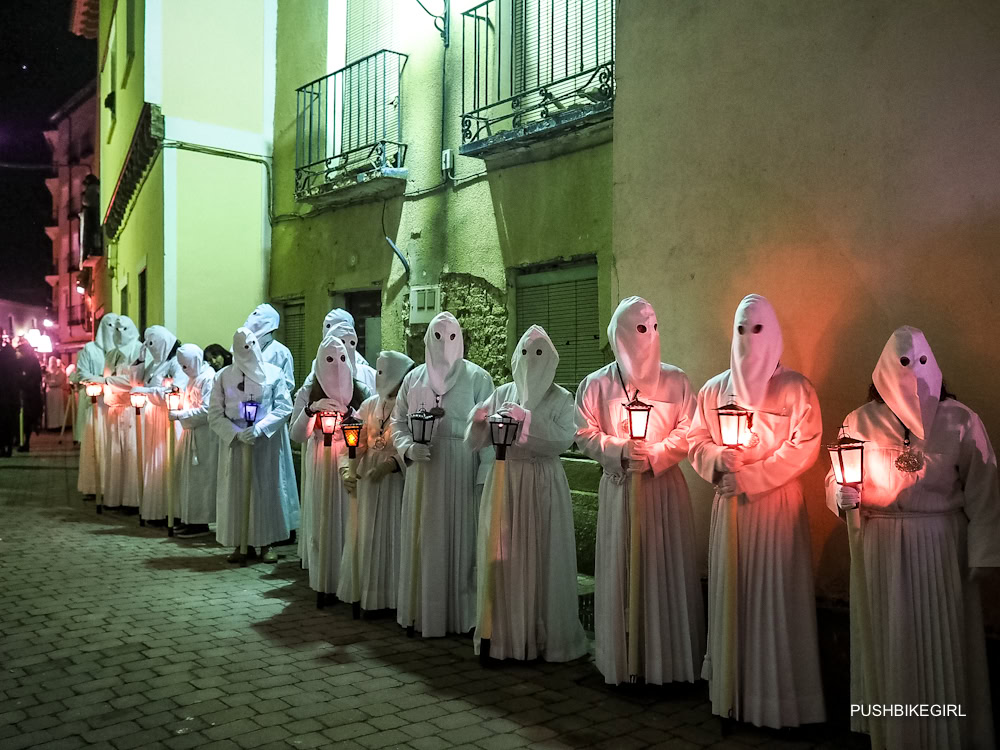
I was thrilled and surprised by the large-scale event organized in the small town.
The whole town seemed involved, and I think the pictures speak for themselves.
Instead of looking for eggs in the garden, it was a very different Easter.
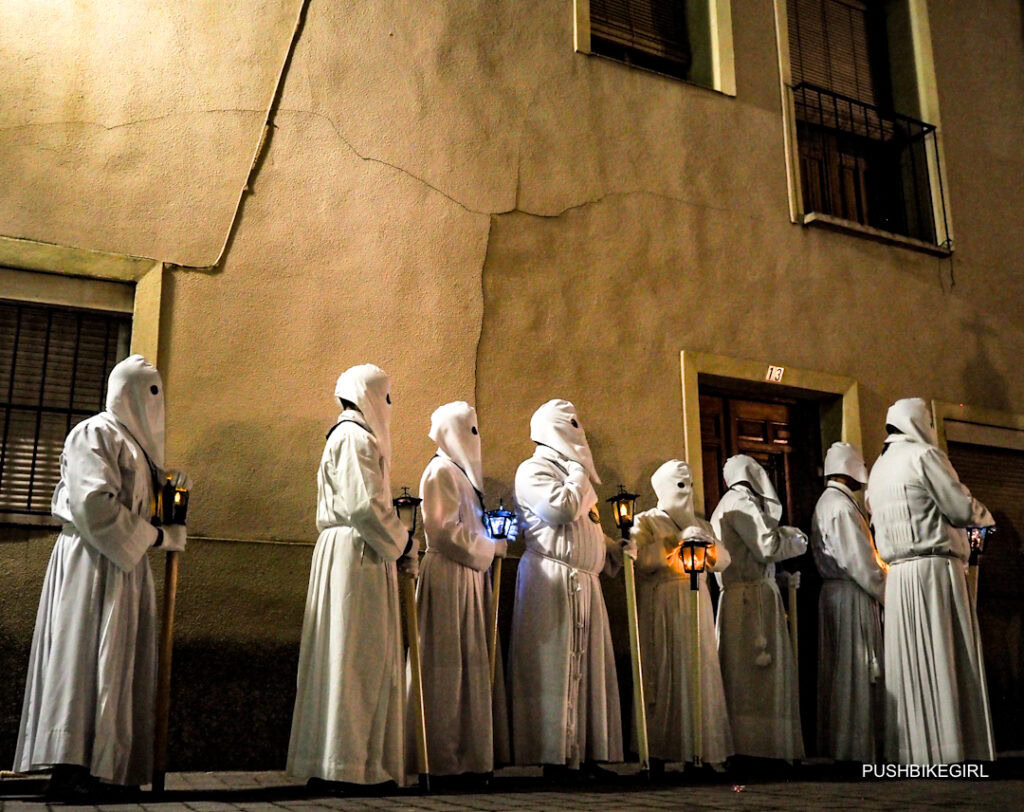
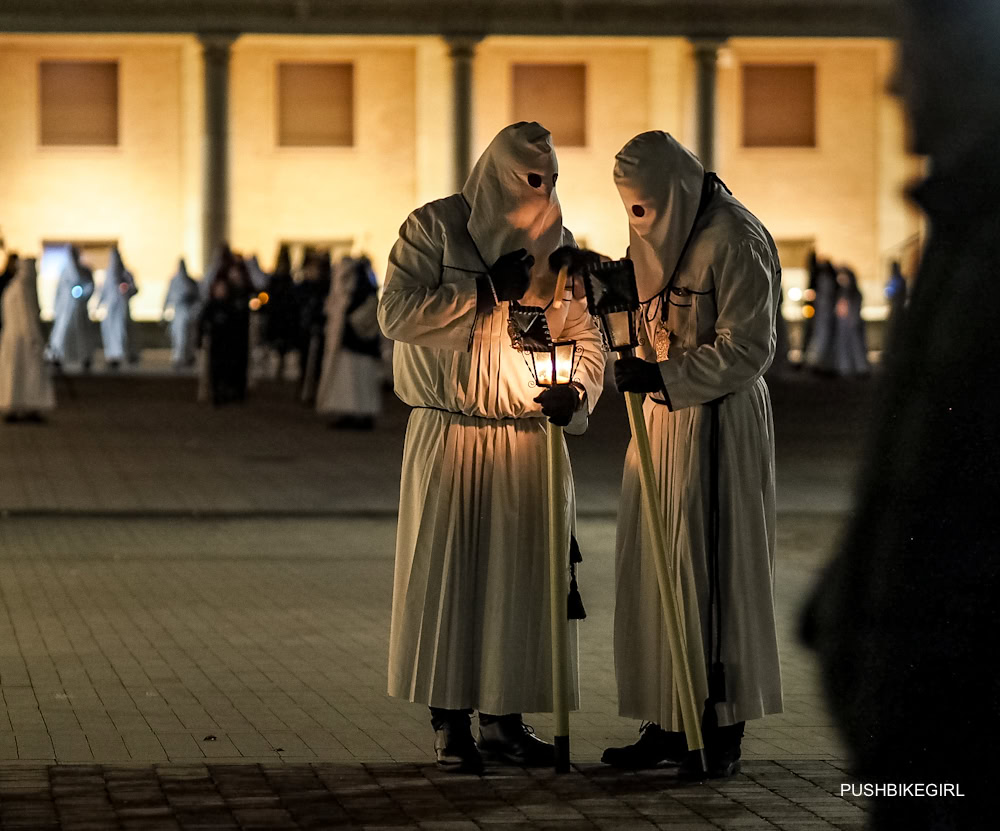
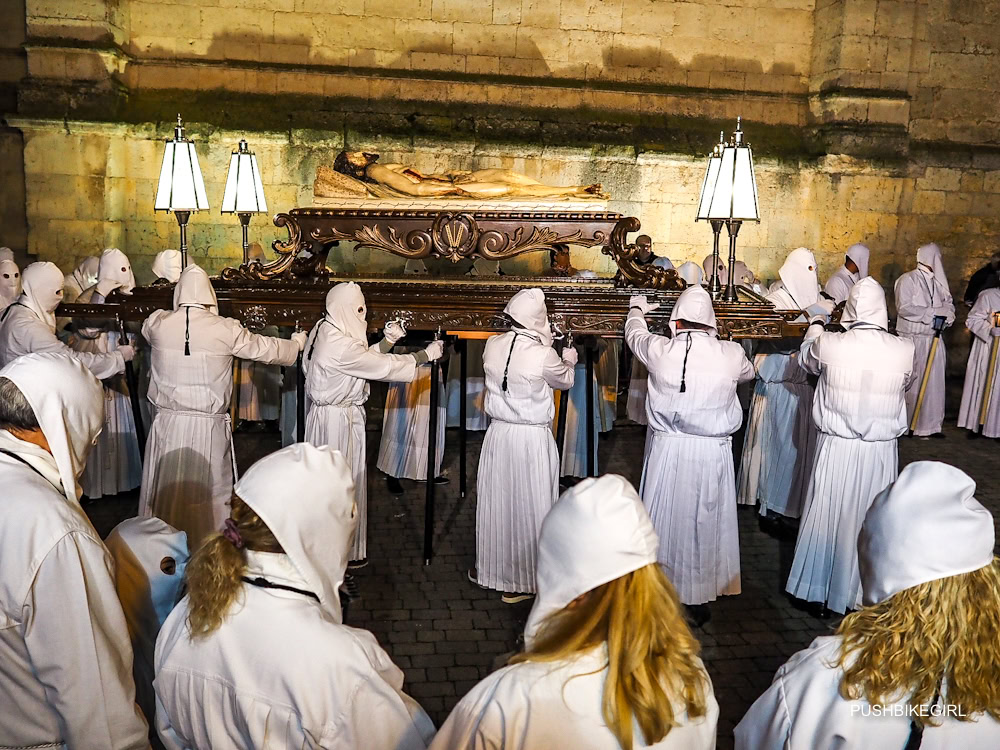
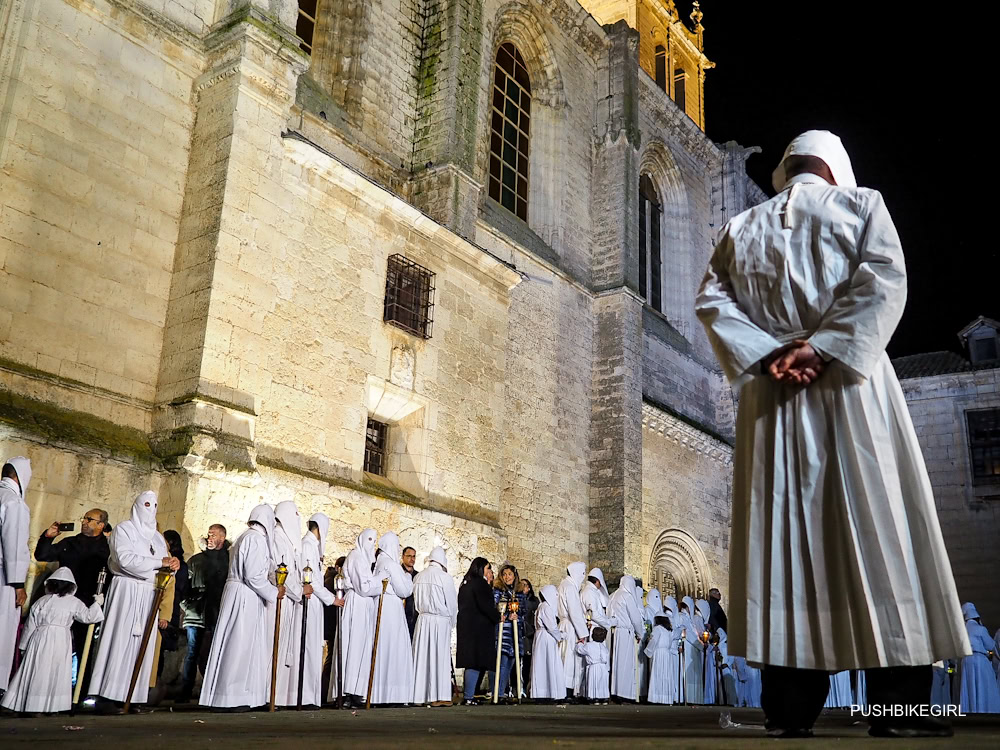
In the evening, we crawled back into the boiler room where we had slept the night before. Luckily, there was no rain today, so there was no water splashing onto my face like the previous night.
Unfortunately, Butch wasn’t allowed to sleep in the hostel, and every other accommodation was fully booked.
That’s what it’s like when you have a dog.
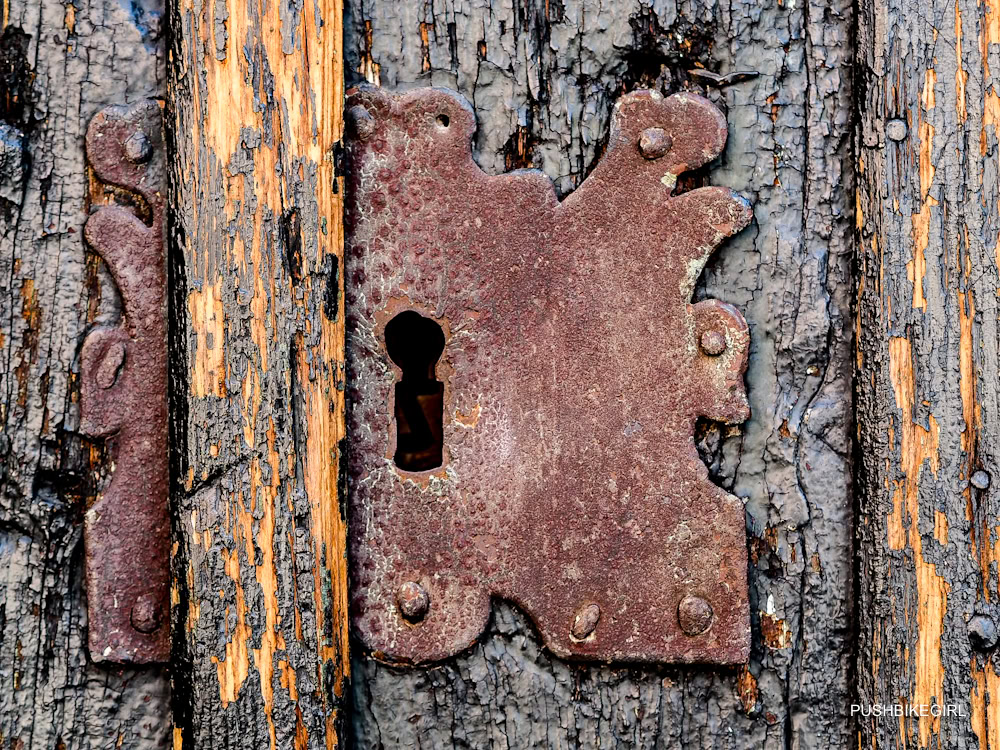

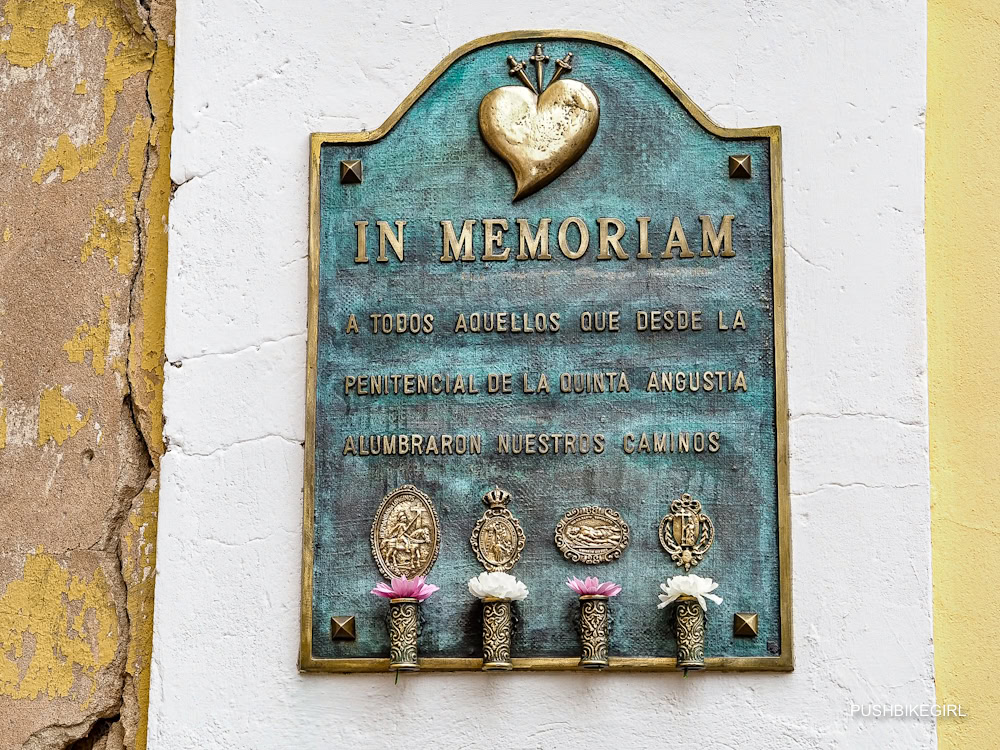
Meadows, fields, a bit of up and down, expansive views, and another village at the end of the day pretty much describes the Camino Madrid.
Exciting is something else, but we still had fun. I was delighted that we could walk through the villages without stress. No dogs that wanted to attack us. At last, we could walk without worrying about what was lurking around the next corner.
One hostel became my favorite because Fernando and his wife, who were volunteering there that week, invited me for dinner because I had nothing left.
We were joined by a group of Spaniards who were just as hungry and had miscalculated their food rations.
Often, there was no supermarket in the villages; there was just a bar or small store that was only open a few hours a day.
So shopping hadn’t always been easy.
Anyway, we were all sitting together at the dinner table, and Anne came up with the idea of saying, “Pipipip, we all love each other” instead of praying, and I helped her finish the sentence. She had learned the table saying from a German pilgrim:
“Pipipip, we all love each other, everyone eats what they can, just not their neighbor. Let it be cheerful at dinner, enjoy your meal.”
It’s a lively German tradition where everyone holds hands, chants the rhyme together, and ends by banging their elbows and fists on the table.
Fernando and Anne were great, and so we said goodbye with a huge hug, and Butch and I continued north towards our first destination.
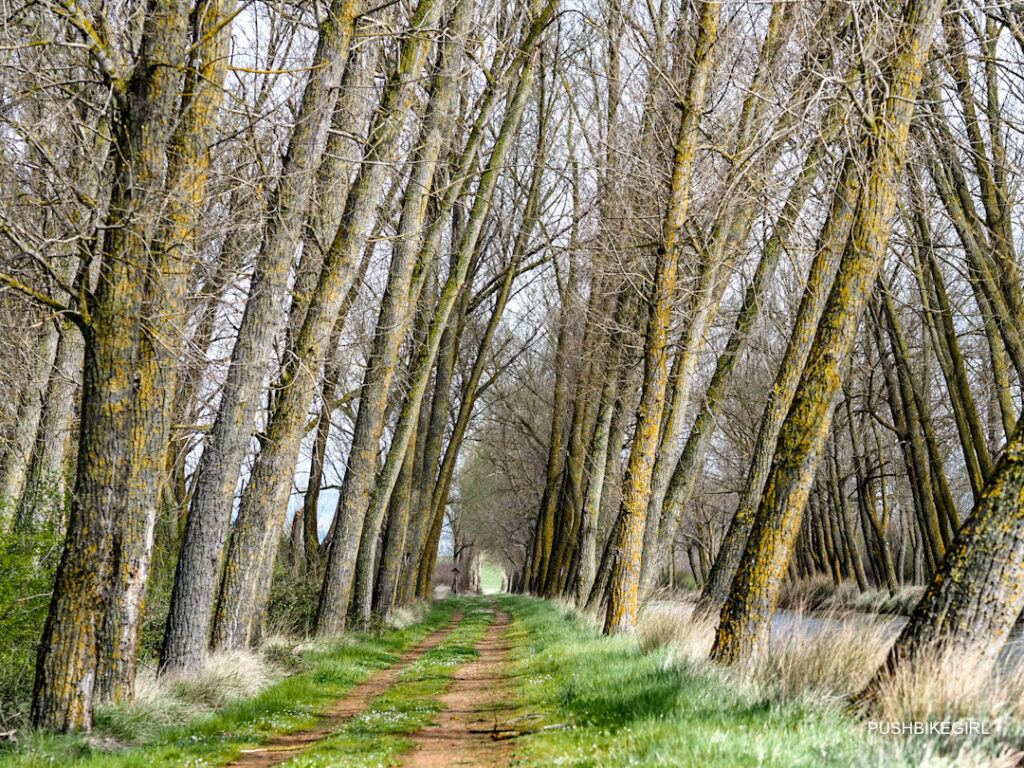
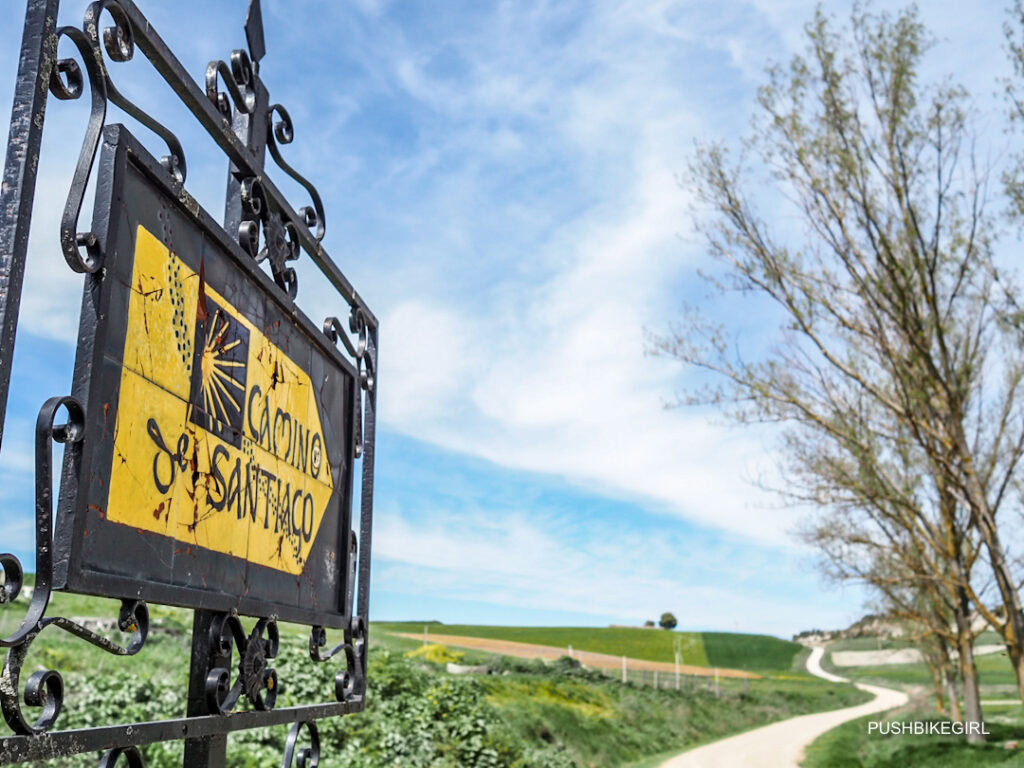
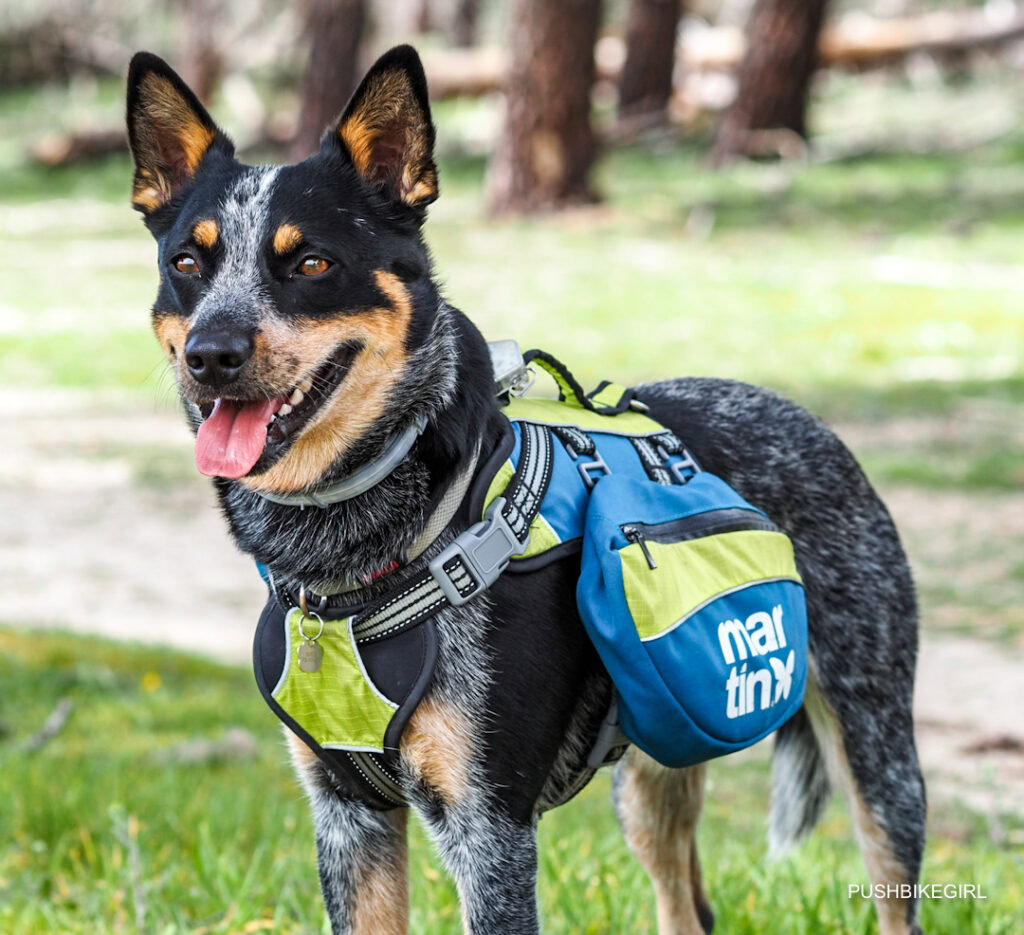
But first, we had to get through another one and a half days on the Camino Frances, which took us to the Camino Vadiniense.
Before I started walking in Madrid, I had no idea how many Caminos there were; really impressive.
The world-famous Camino Frances wasn’t the way to go!
Prices more than tripled from the last village on the Camino Madrid to the first village on the Camino Frances!
But it was raining cats and dogs and still freezing cold, so I grudgingly accepted spending the night for 40 euros, but only had one thing on my mind: let’s get out of here.
People were everywhere; menus were in Korean, Japanese, and countless other languages. I couldn’t believe what a huge difference it suddenly made, especially as the path ran next to the main road.
All young people walking along the boring camino.
I even met someone walking with his double bass and pulling a cart.
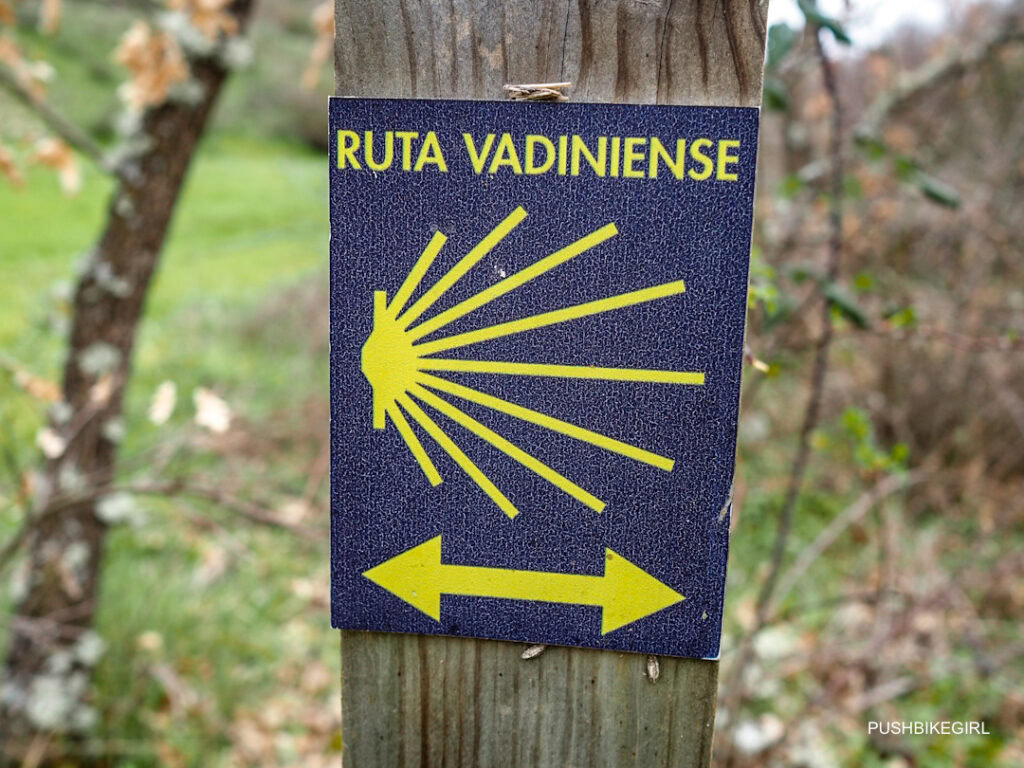
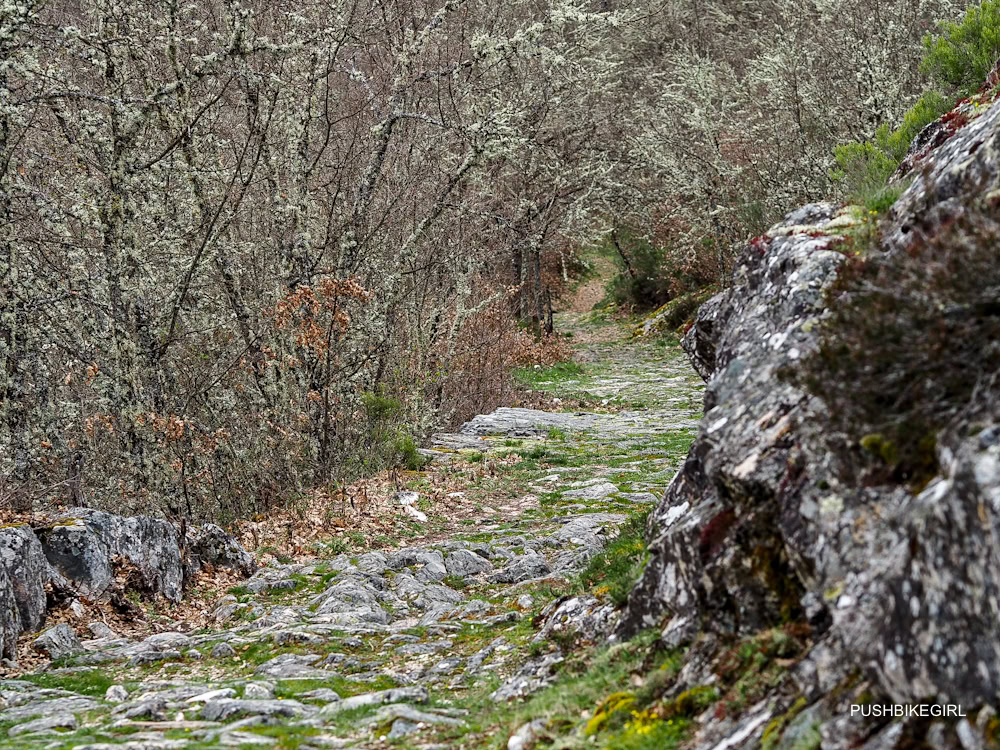

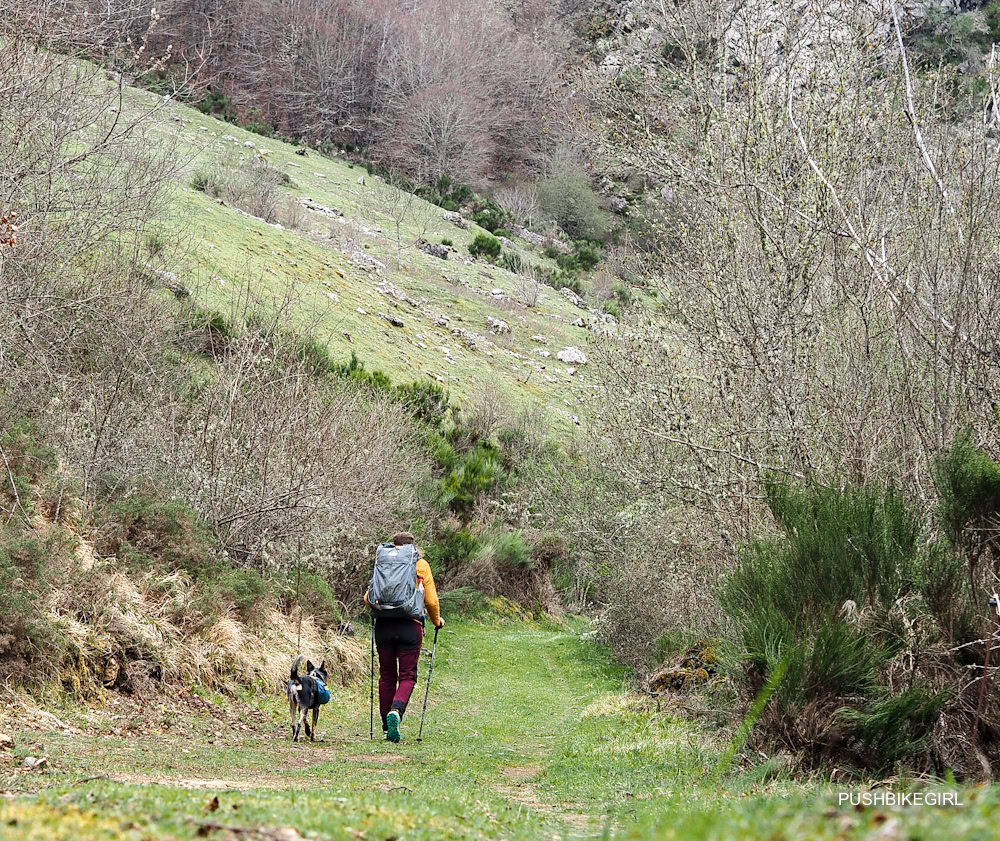
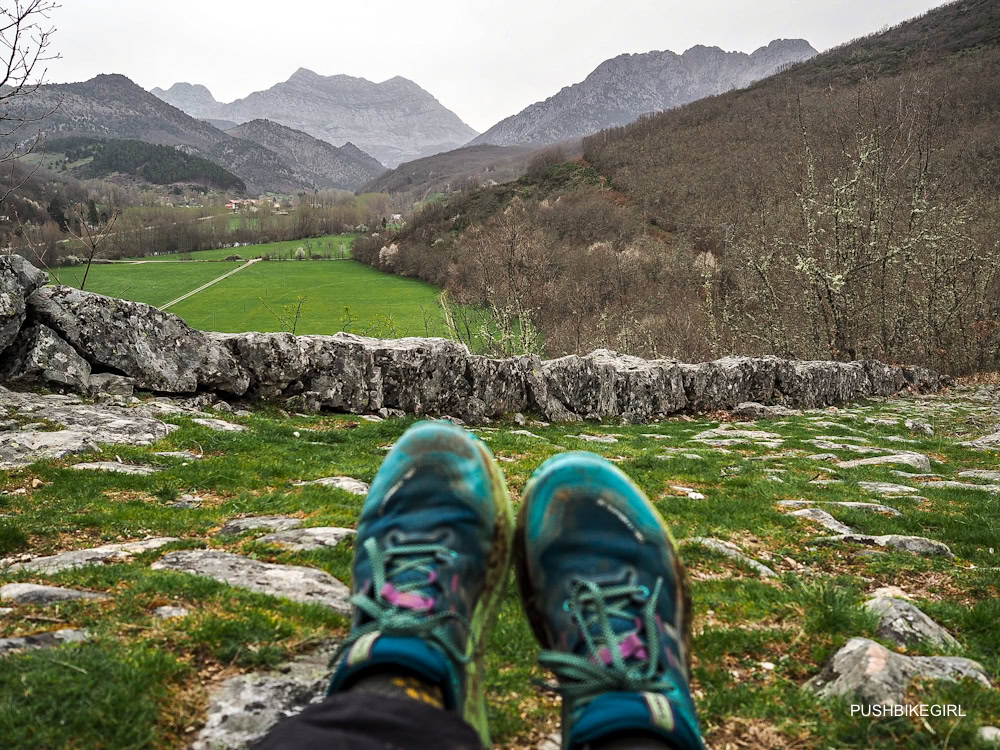
As soon as we turned onto the Camino Vadiniense, we were alone again. Not another pilgrim crossed our path, and we had the first hostel for ourselves again for five euros.
Storks, cows, and sheep accompanied us along the way. Meadows, fields, and the mountains came closer, and we enjoyed the first dry evening, which allowed us to camp again.
The landscape became more exciting, and so did the trail.

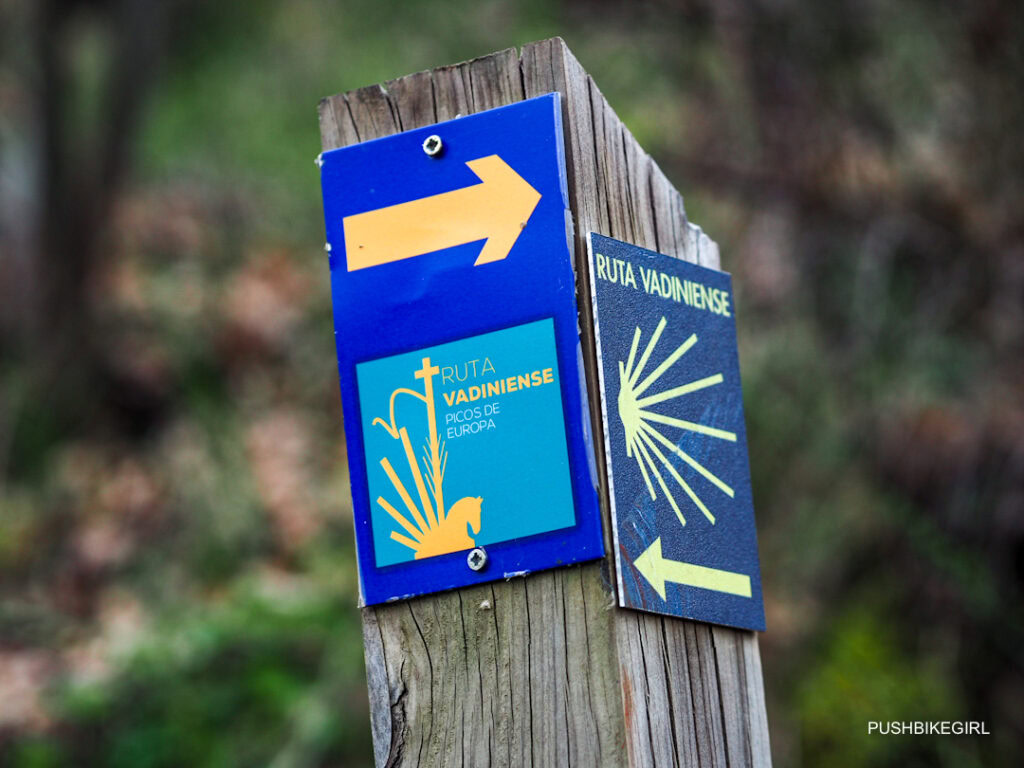
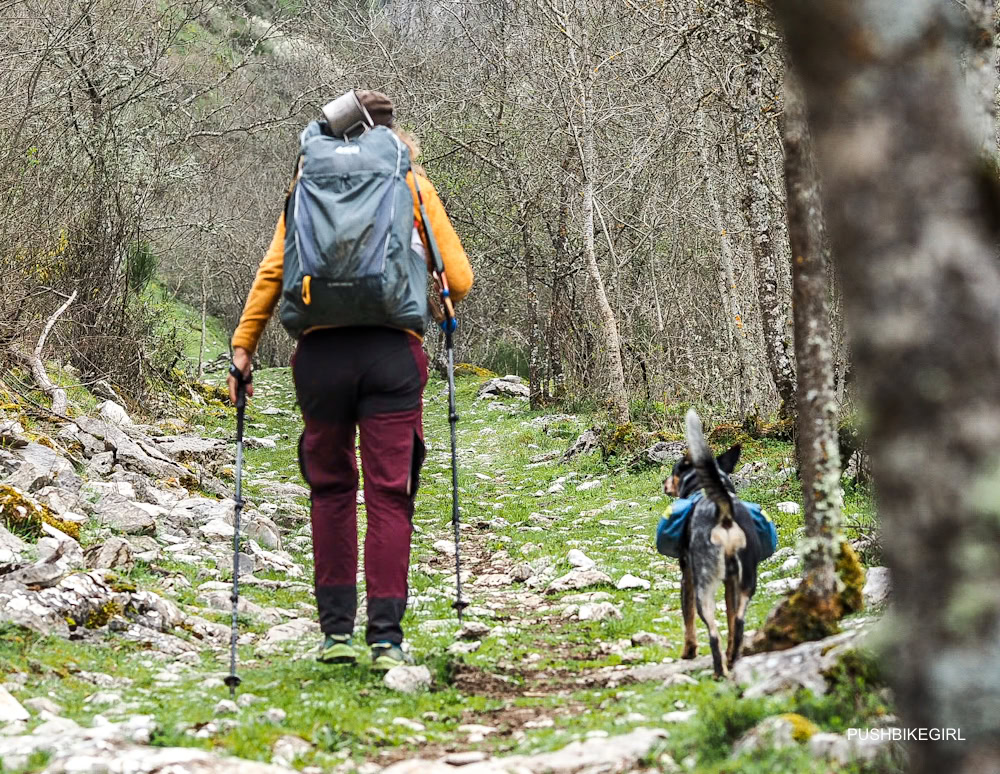
After 430 kilometers (267 miles) on the Caminos, I saw the first GR1 sign and that our test trail was over.
I was looking forward to the mountains ahead.
I was proud that we had made it this far and was delighted that my foot and long-standing hand injury had been able to cope with everything.
Buen Camino!
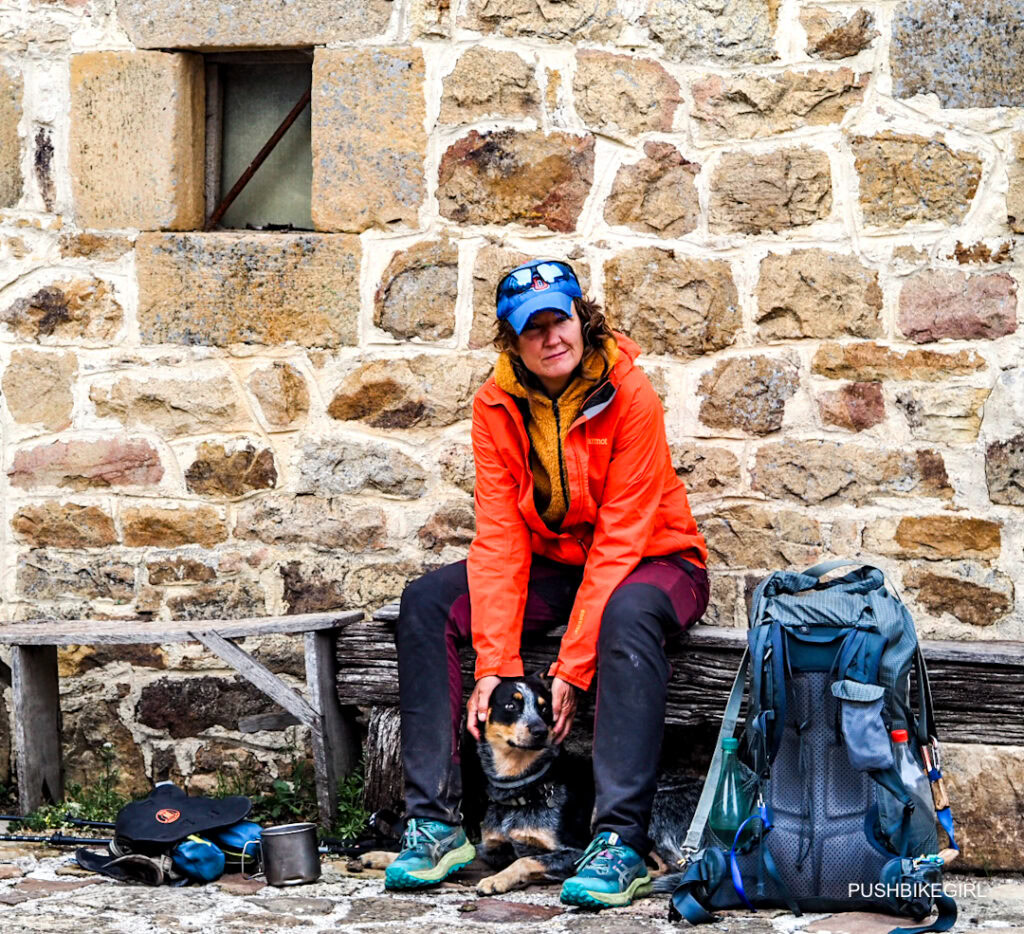
Tip
We exchange euros for postcards ![]()
Thank you for your support – we really appreciate it.
Best regards from Heike and Butch
This way
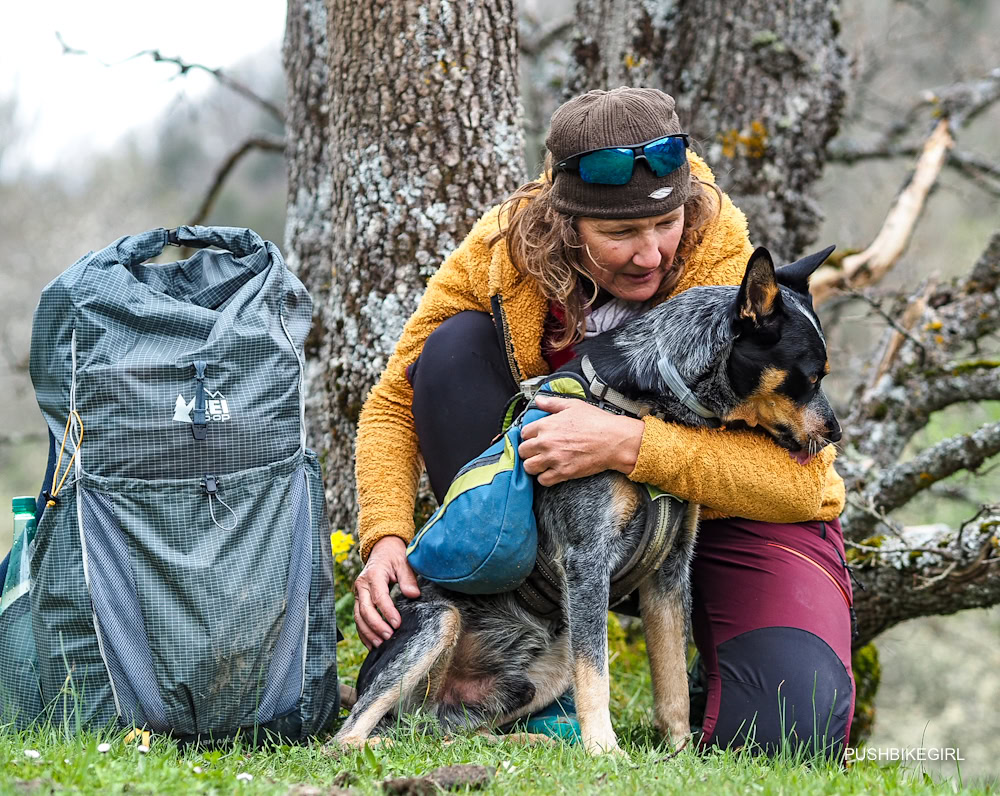
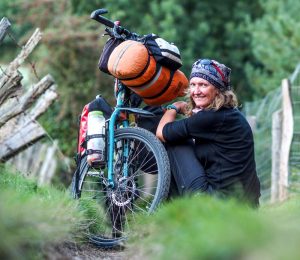

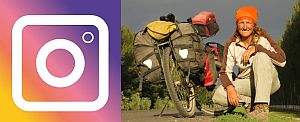
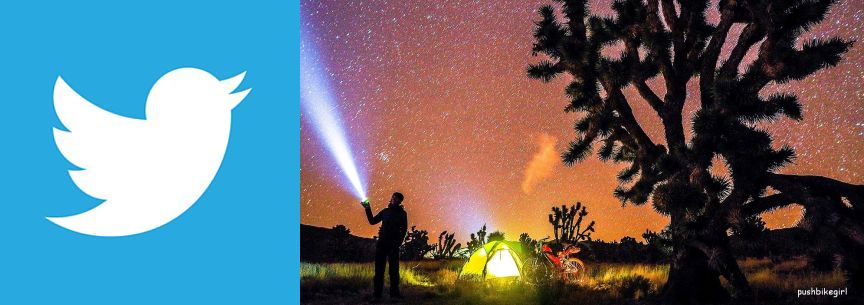

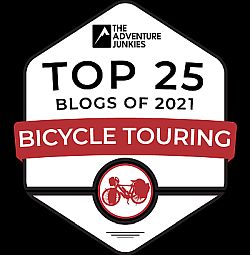
Heike, seems like you are catching up on your adventures of the last year. A treat for those of us who have followed you through the years.
Glad to see you made it back to your home continent, so far from your story and beautiful photography it looks like your rediscovery is going well.
Thanks so much for taking us along.
Pipipip
🙏 Yup Ronny, we had a great time so far – more to come! Thanks mate!
Pipipip
Gute Heimkehr!!
Volker
Danke Volker 😉
Sag mal, wenn mich nicht alles taeuscht bist du bei mir im Newsletter angemeldet, richtig?
HAst Du den Patagonien Artikel als Info zugeschickt bekommen?
https://pushbikegirl.com/patagonien-herzliche-begegnungen-und-der-abschied-von-suedamerika/
Scheinen ein paar Leute nicht bekommen zu haben und ich versuche grade zu verstehen warum dem so war.
DANKE, LG Heike und Butch
Hi Heike,
I am a friend of Kathryn Mossbrook Zimmerman “Baglady”. She introduced me to your blog. I am fascinated with your travels and with Butch. What a great dog! Your pictures are AMAZING! Thanks for allowing me to live vicariously through your travels.
Thank you so much Julie.
Kathryn was someone very special. I lived with her for some time—even when she was so terribly ill, she always stayed positive and wanted to see the world.
Thank you for your huge compliment. All the best from us.
Such energy you have! You will soon be in good shape. I enjoy cycling Baja California. All the best for your long way home lars
Thanks Lars !
Baja is awesome – enjoy!
Say hello to TULY
Thanks for your latest blog.I enjoy reading every word and pour over the photos a long time .Butch looks really fit and healthy .From Phil in Perth Western Australia
That’s so wonderful to hear Phil, and it makes me really happy.
All the best!
Merry Christmas
Dear Heike,
Thank you for catching us up on your travels! I always enjoy seeing the world through your eyes! I’ll be keeping an eye out for the next installment. 🙂
Catherine and Dan, you are some of the nicest people I’ve met during my travels. I sometimes wish Canada wasn’t so far away… Otherwise, I’d show up one day to say hi.
Take care of yourselves!
What inspired you to choose the long way home today?